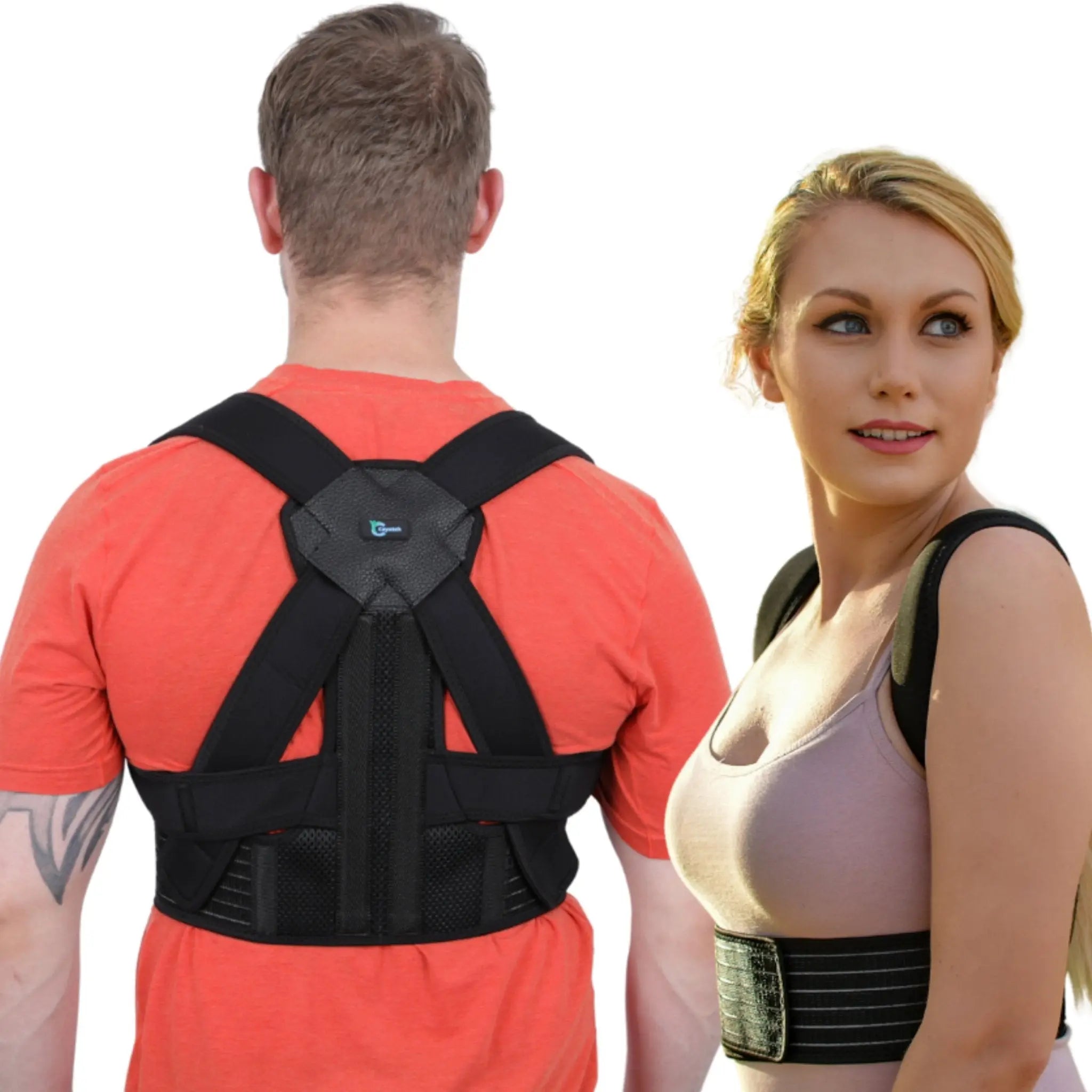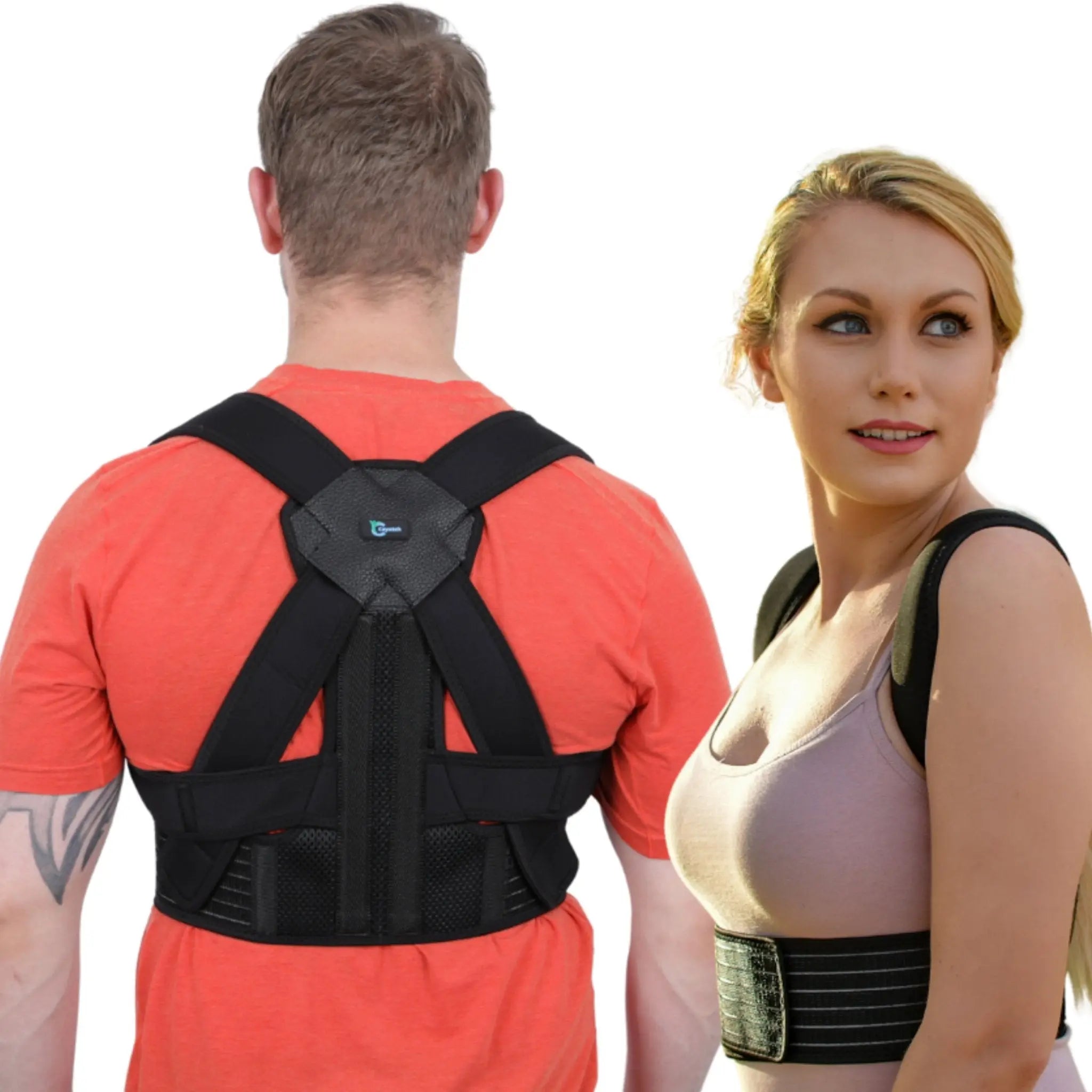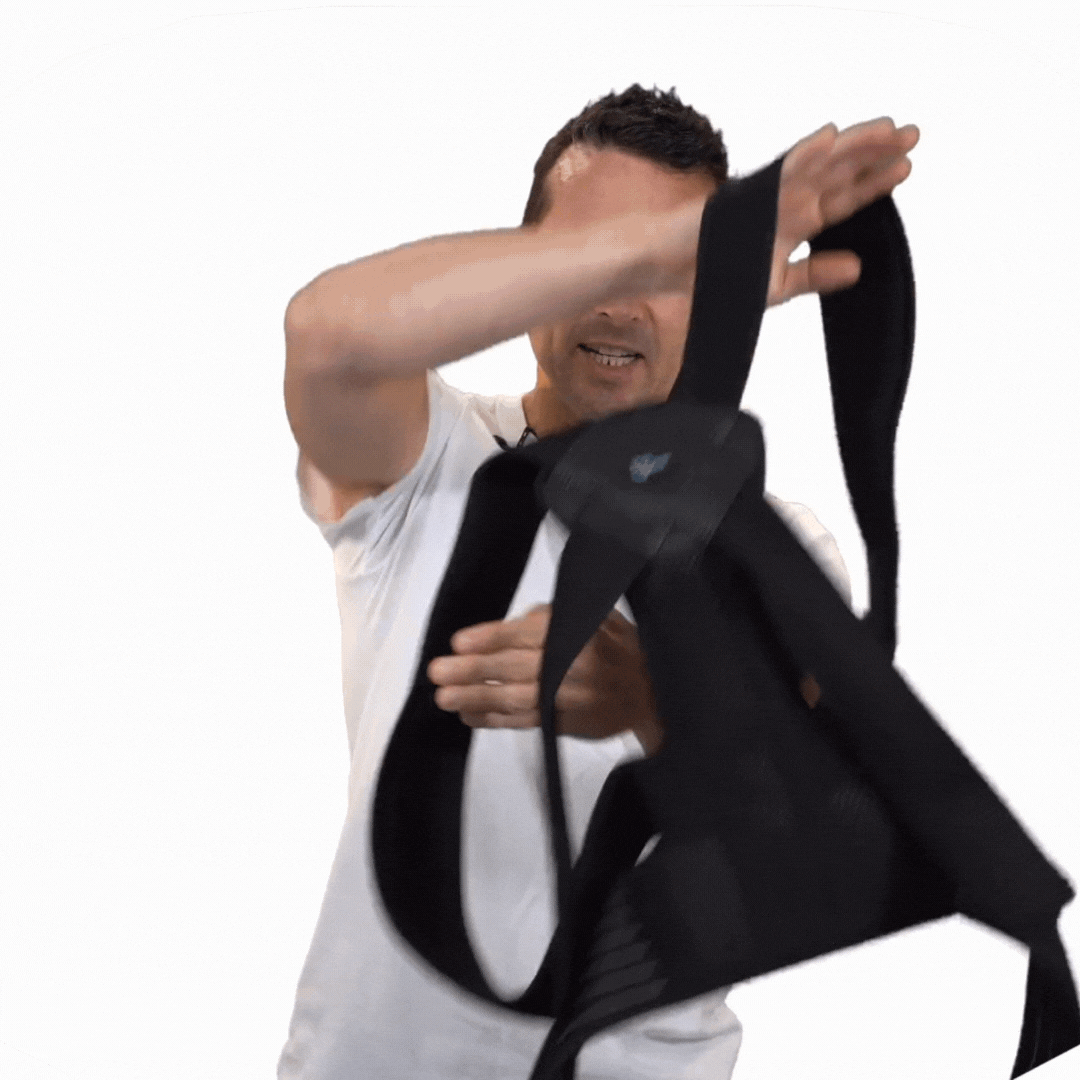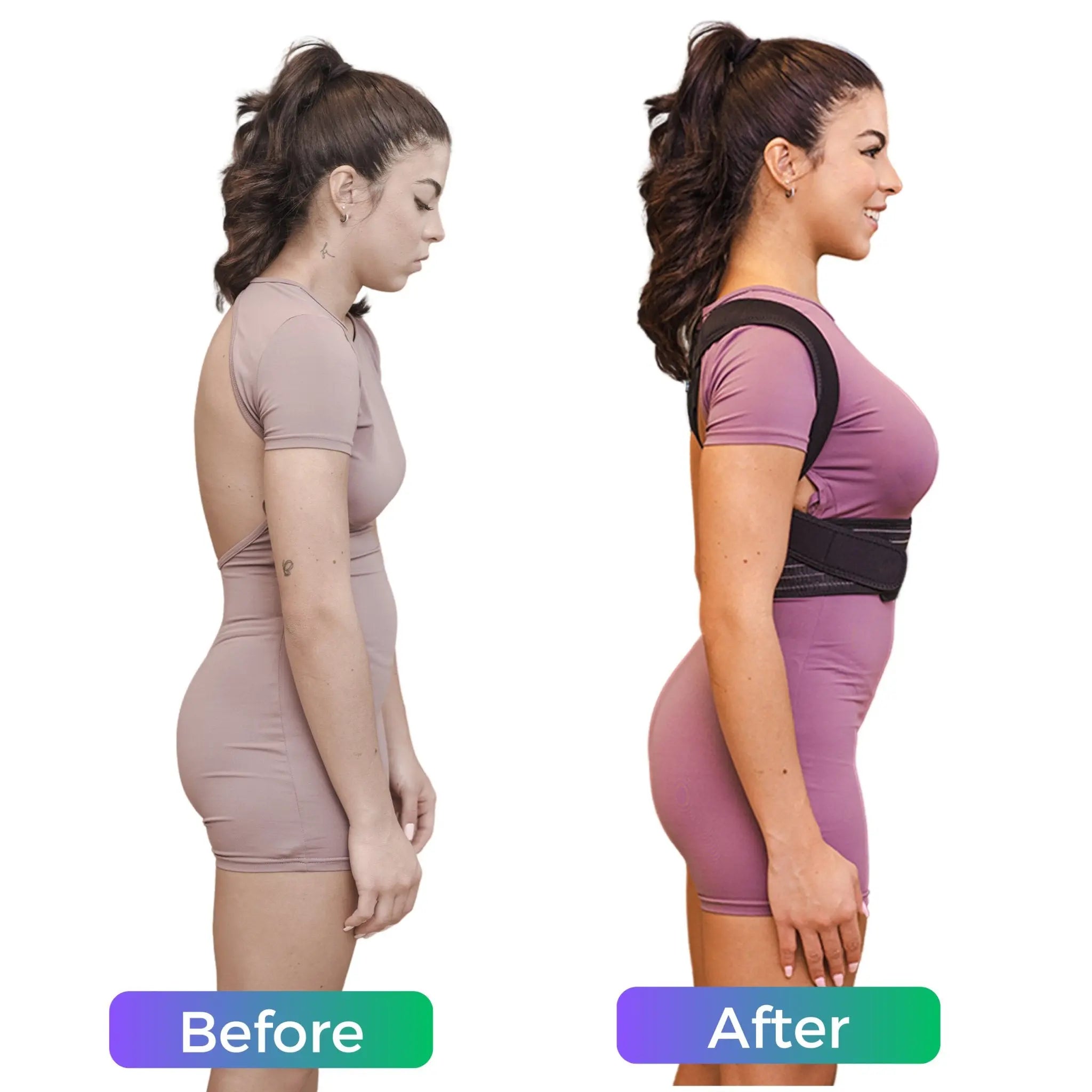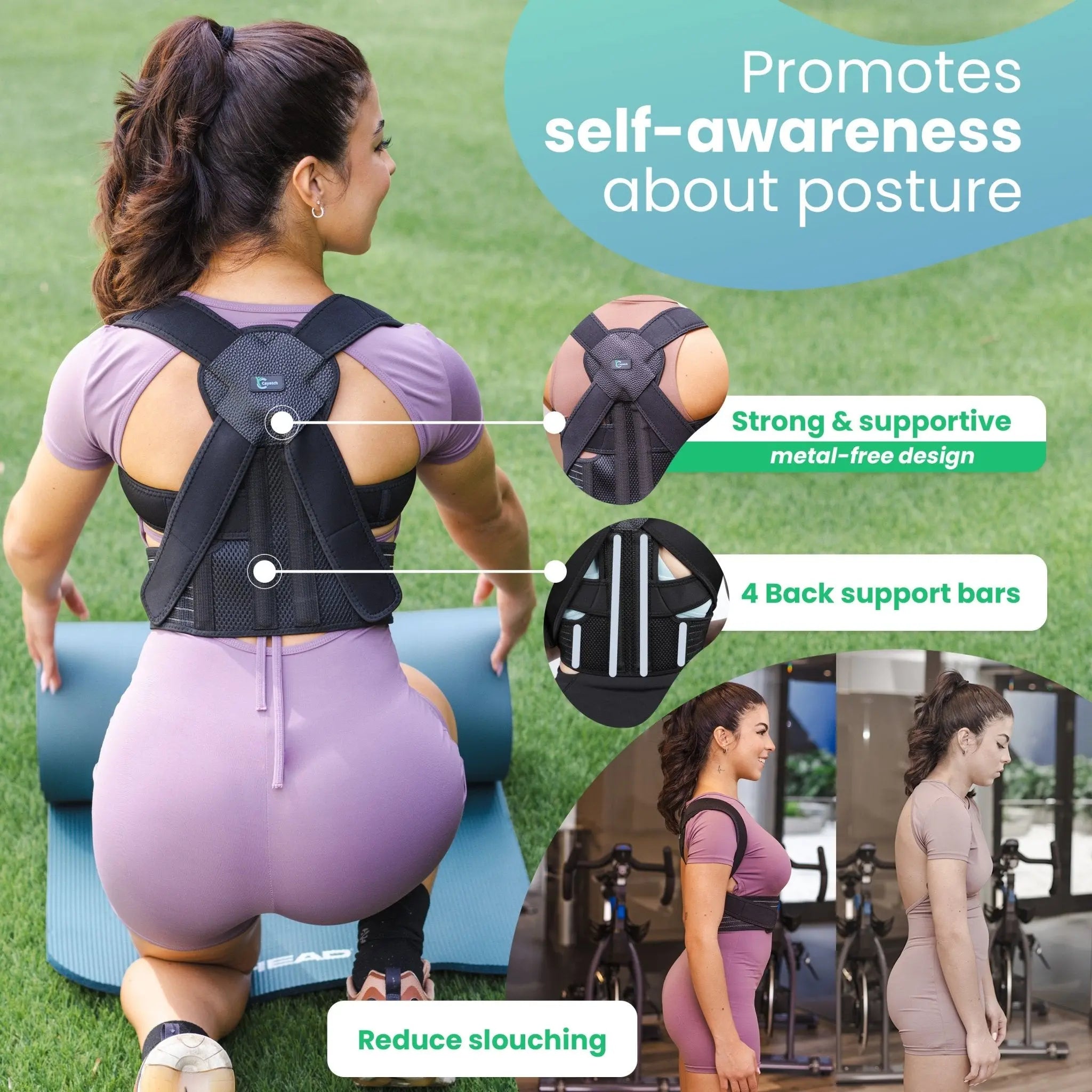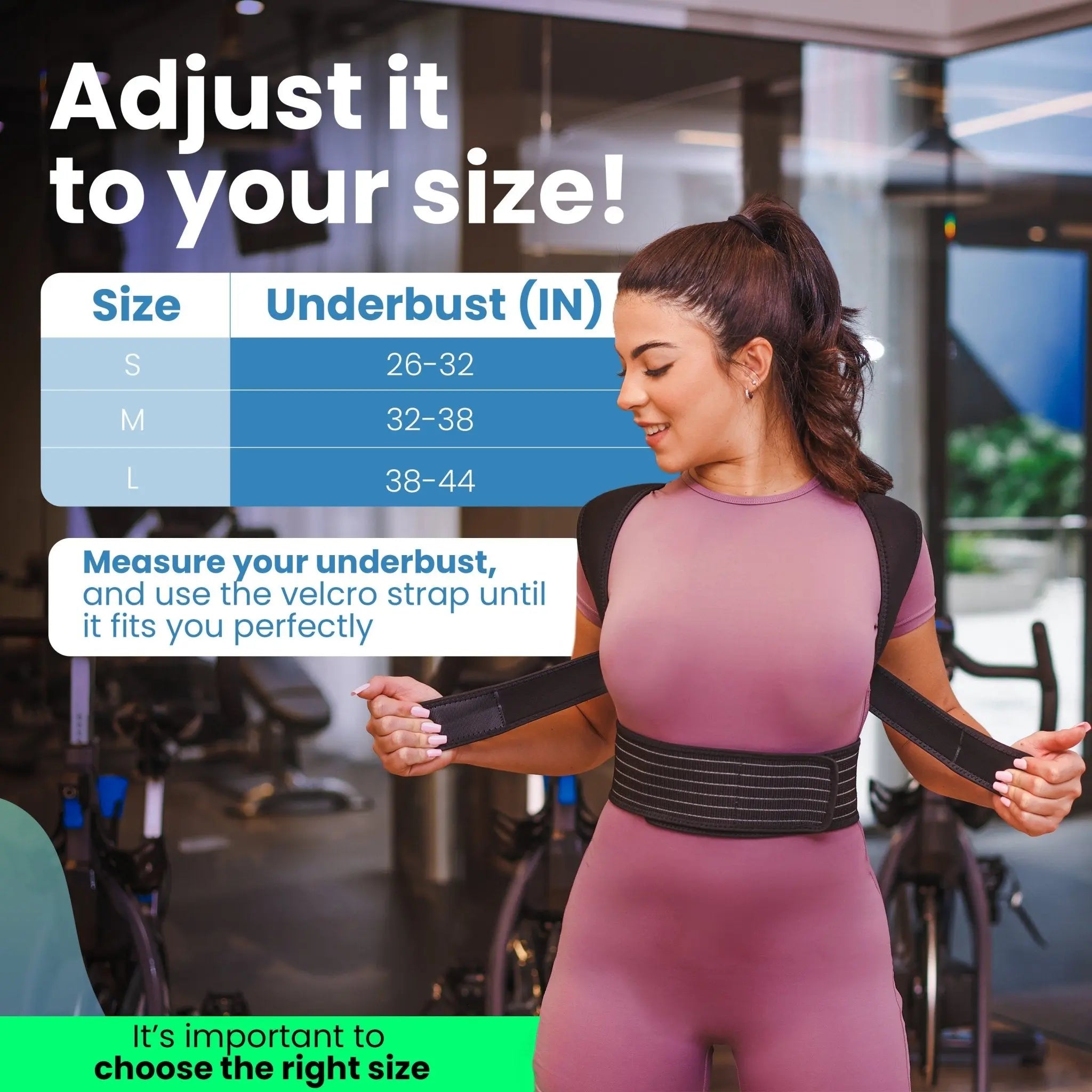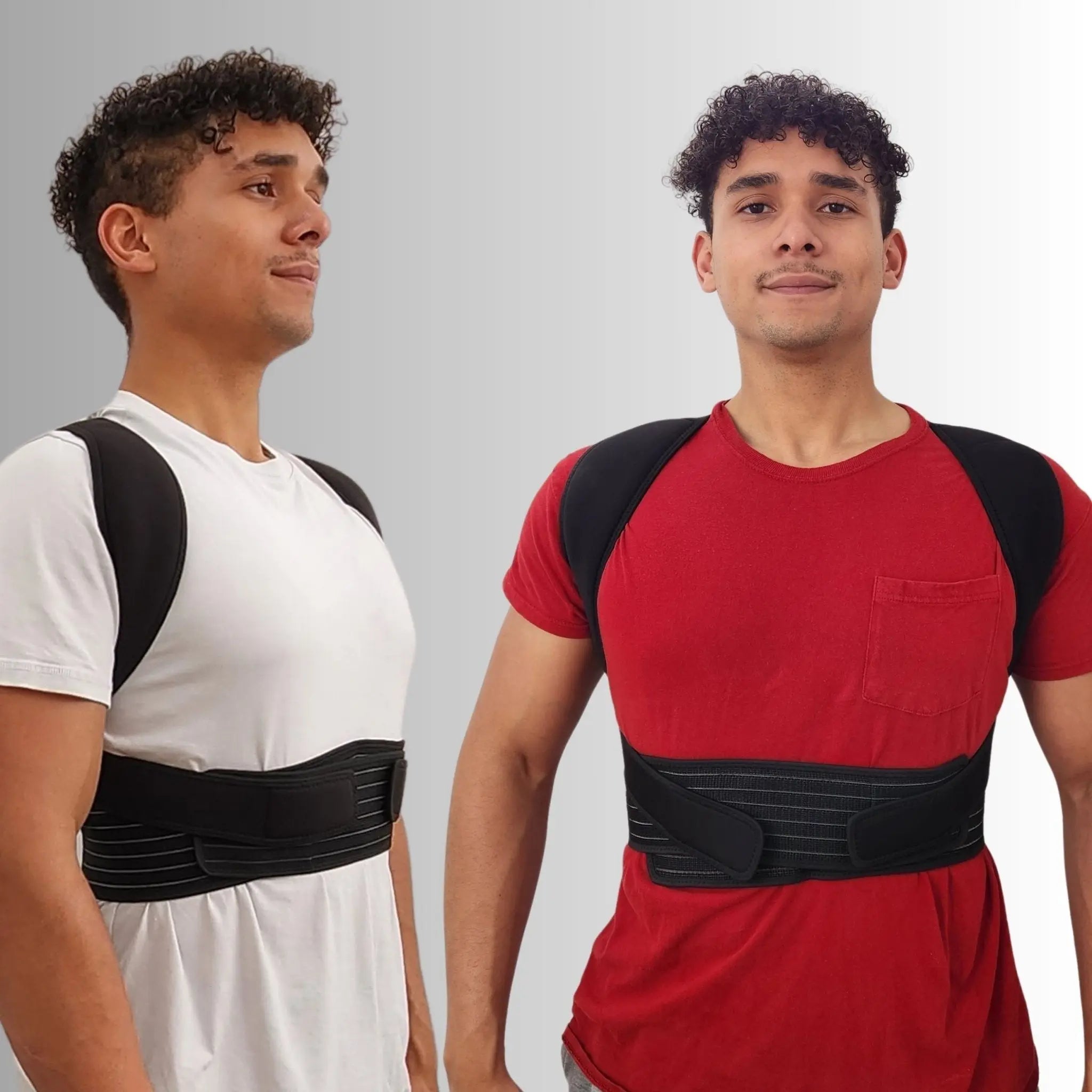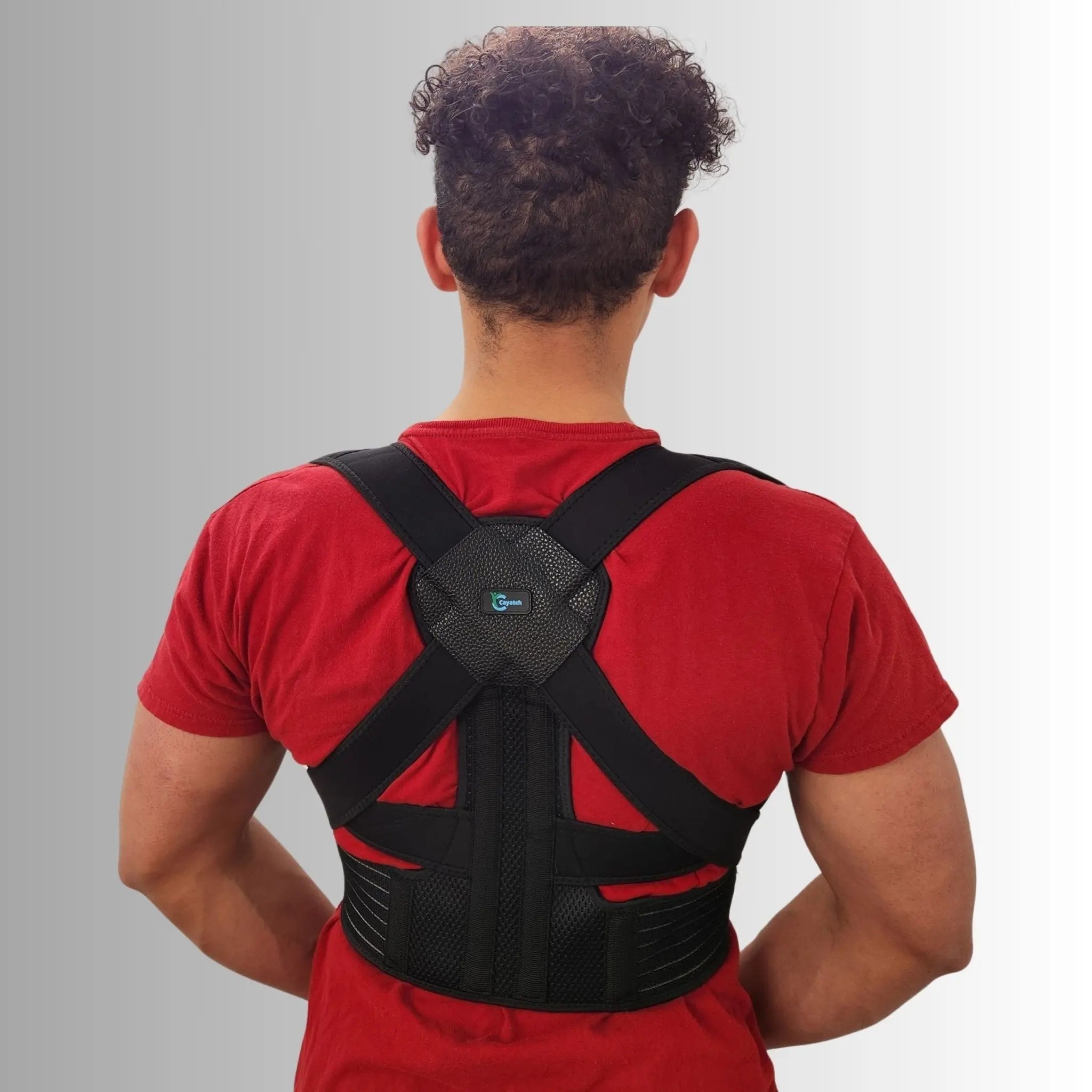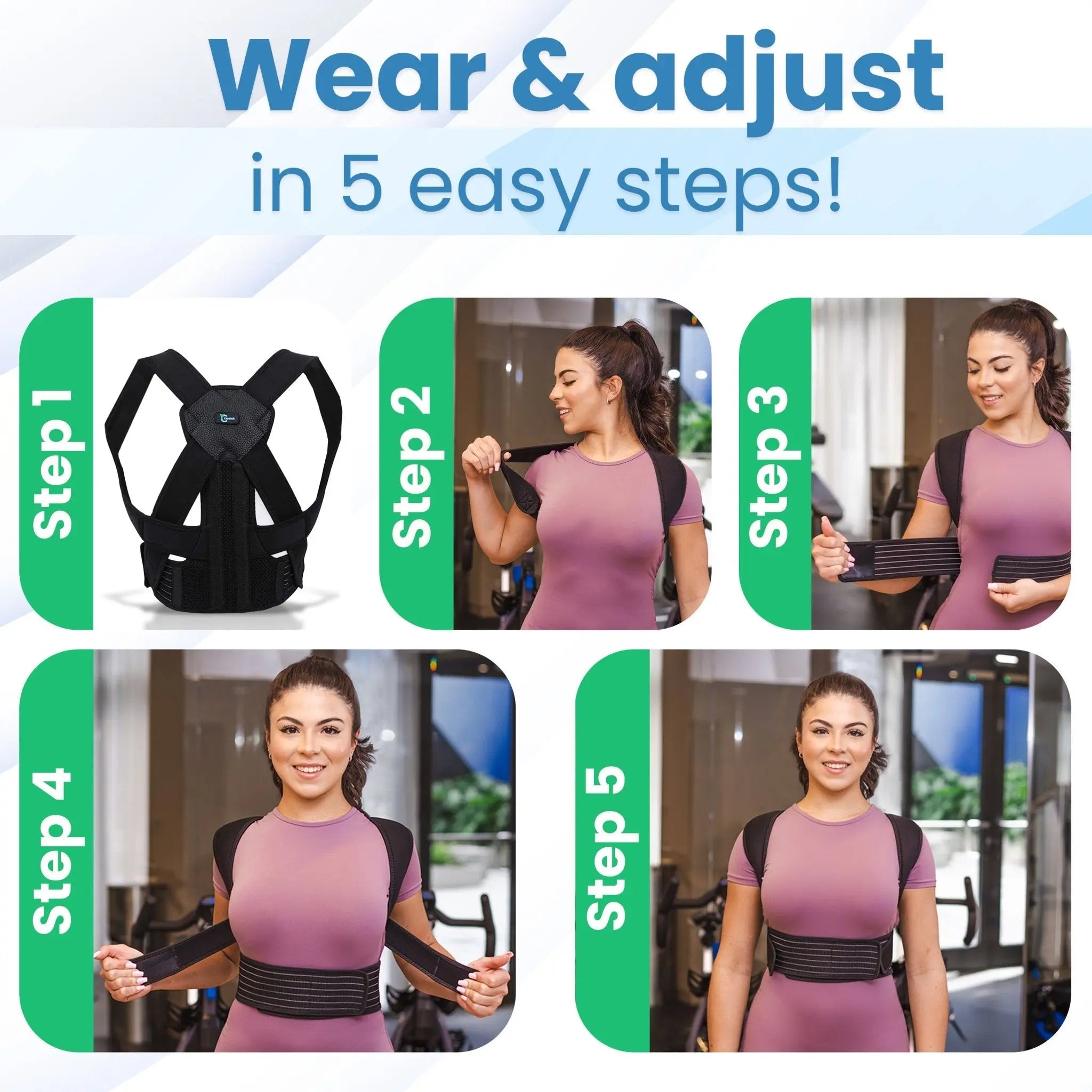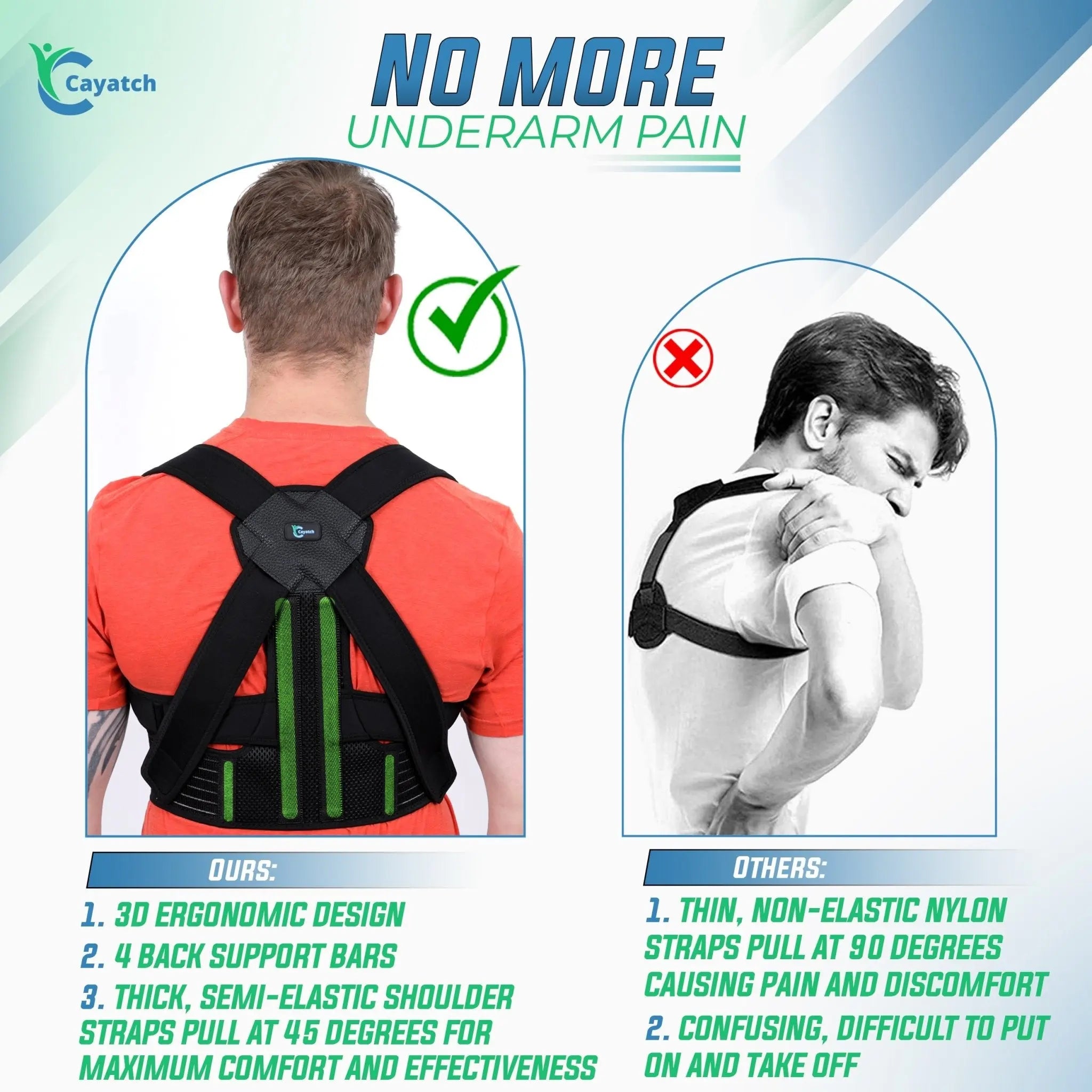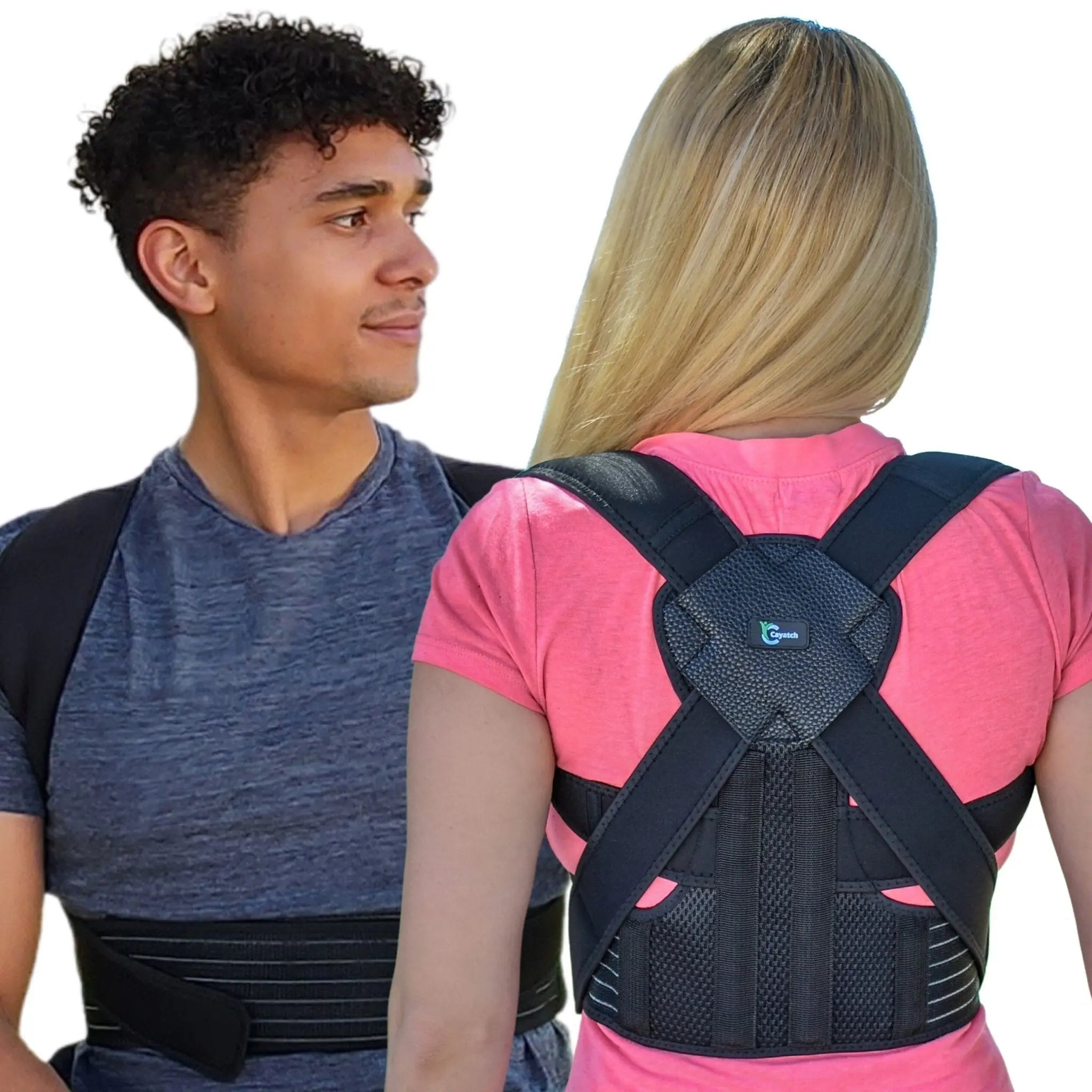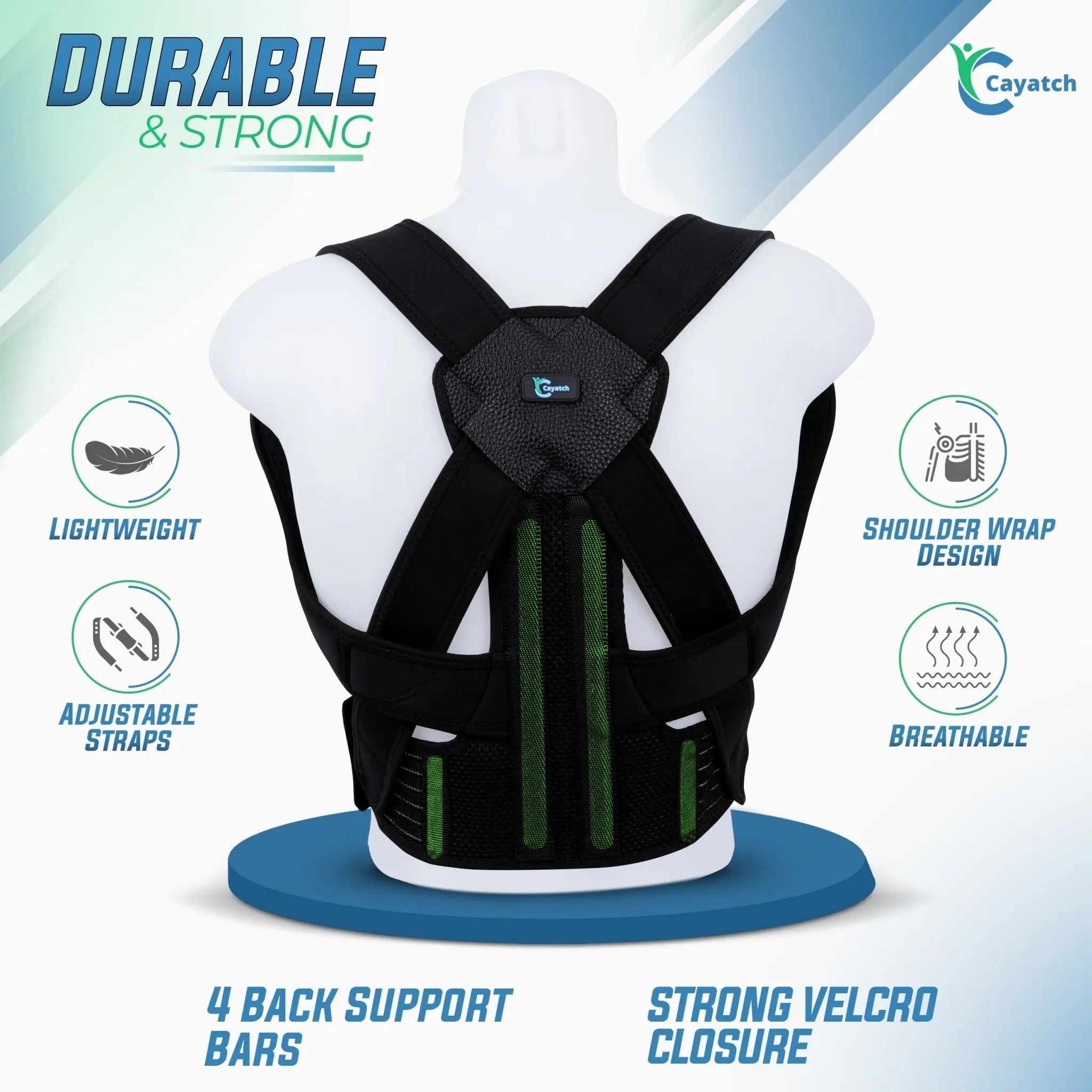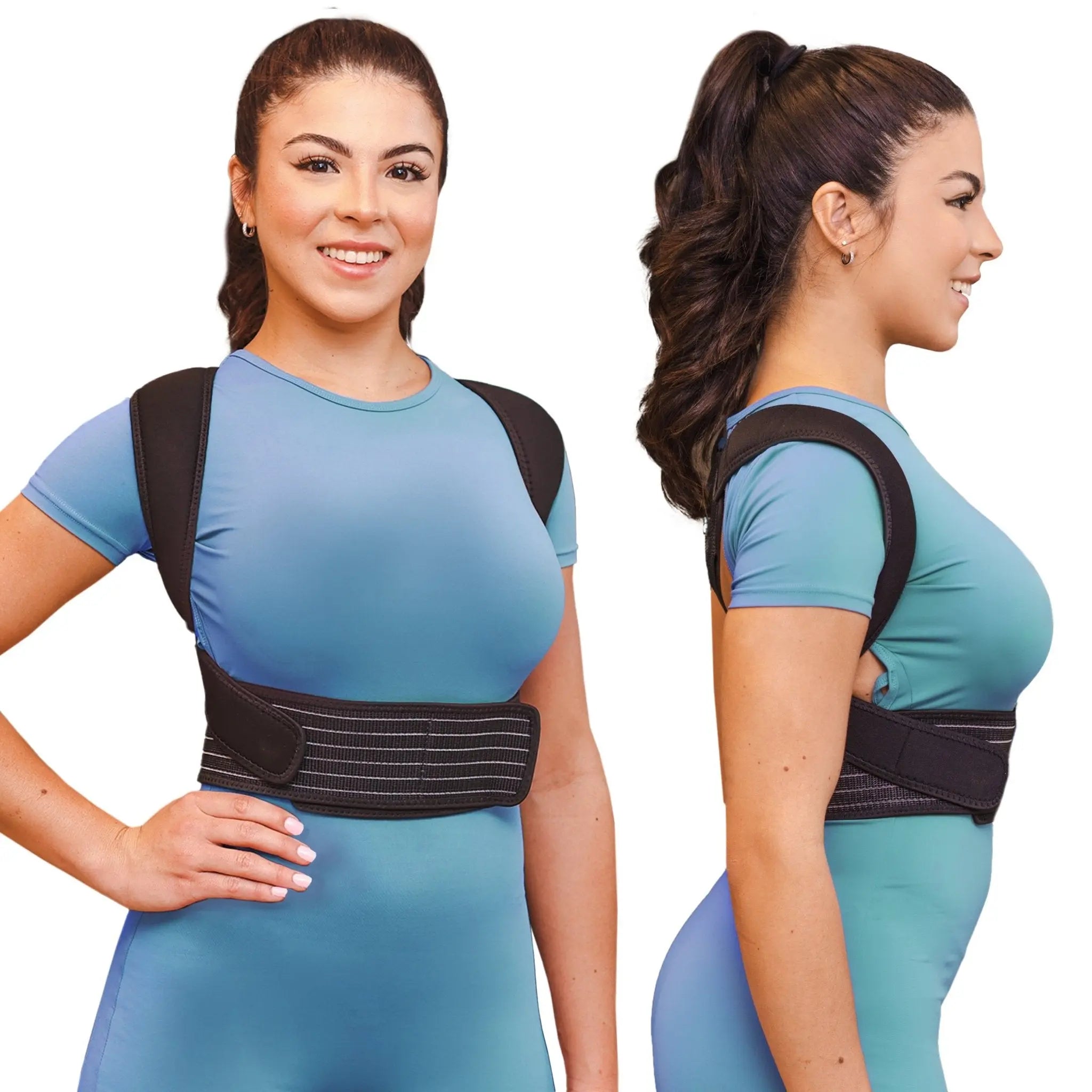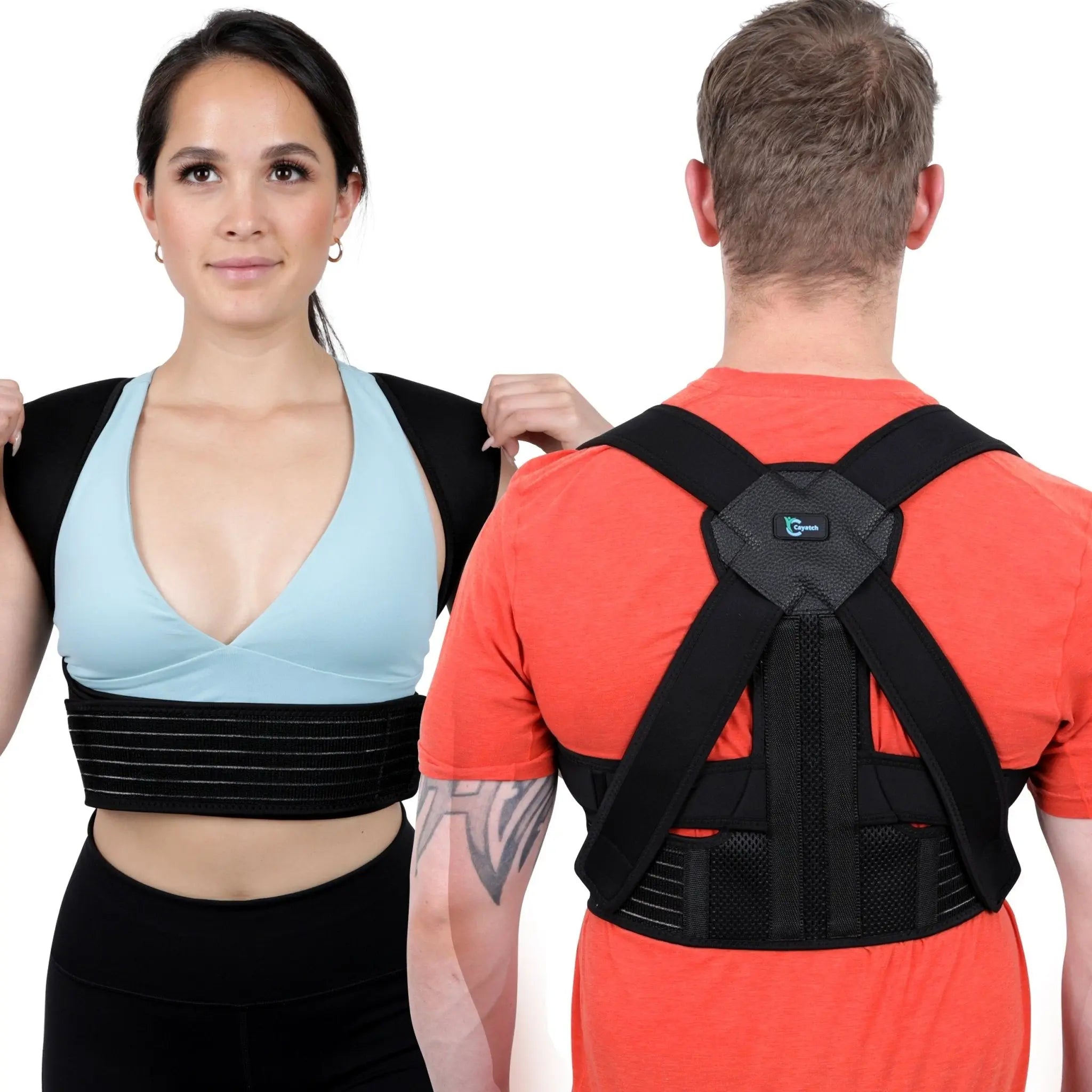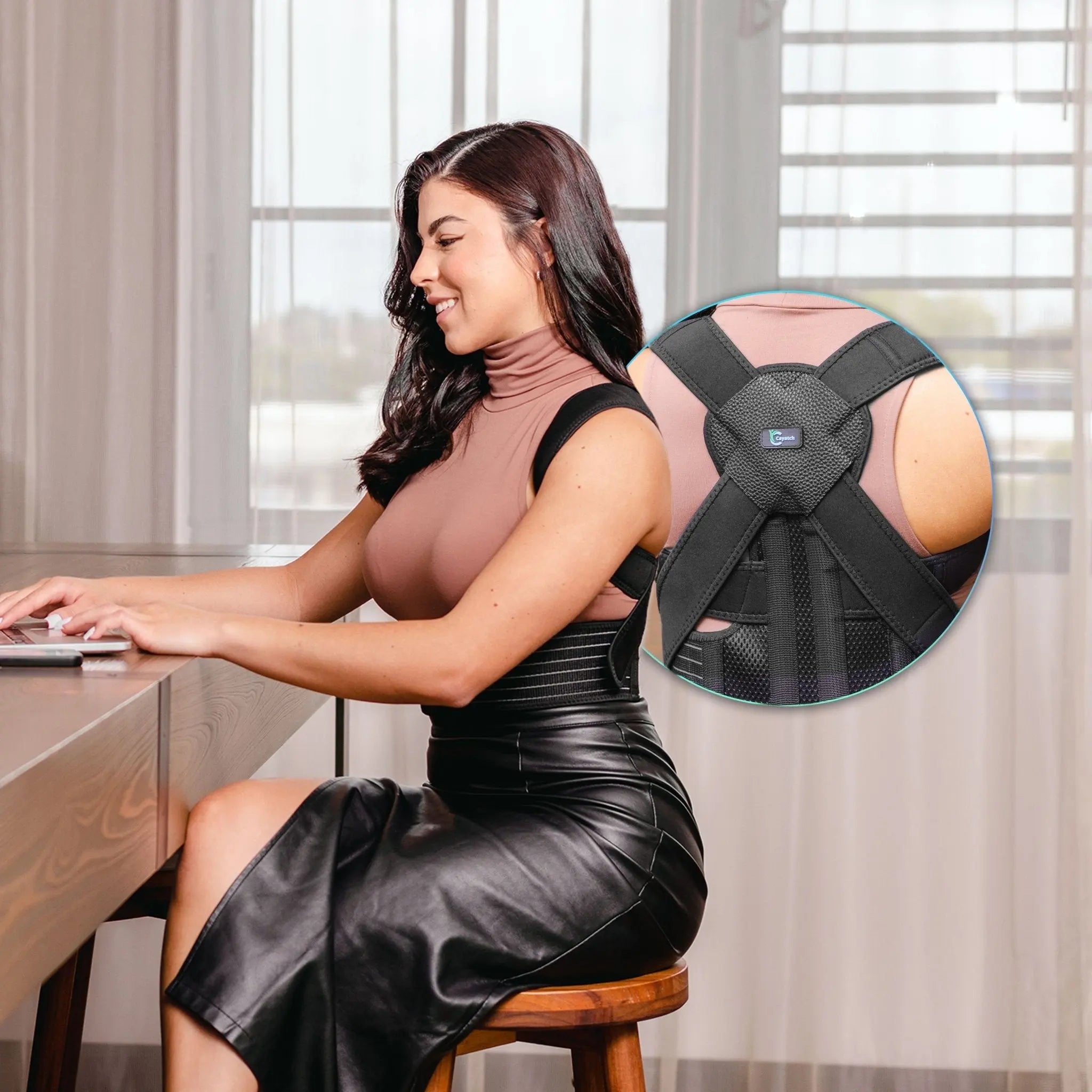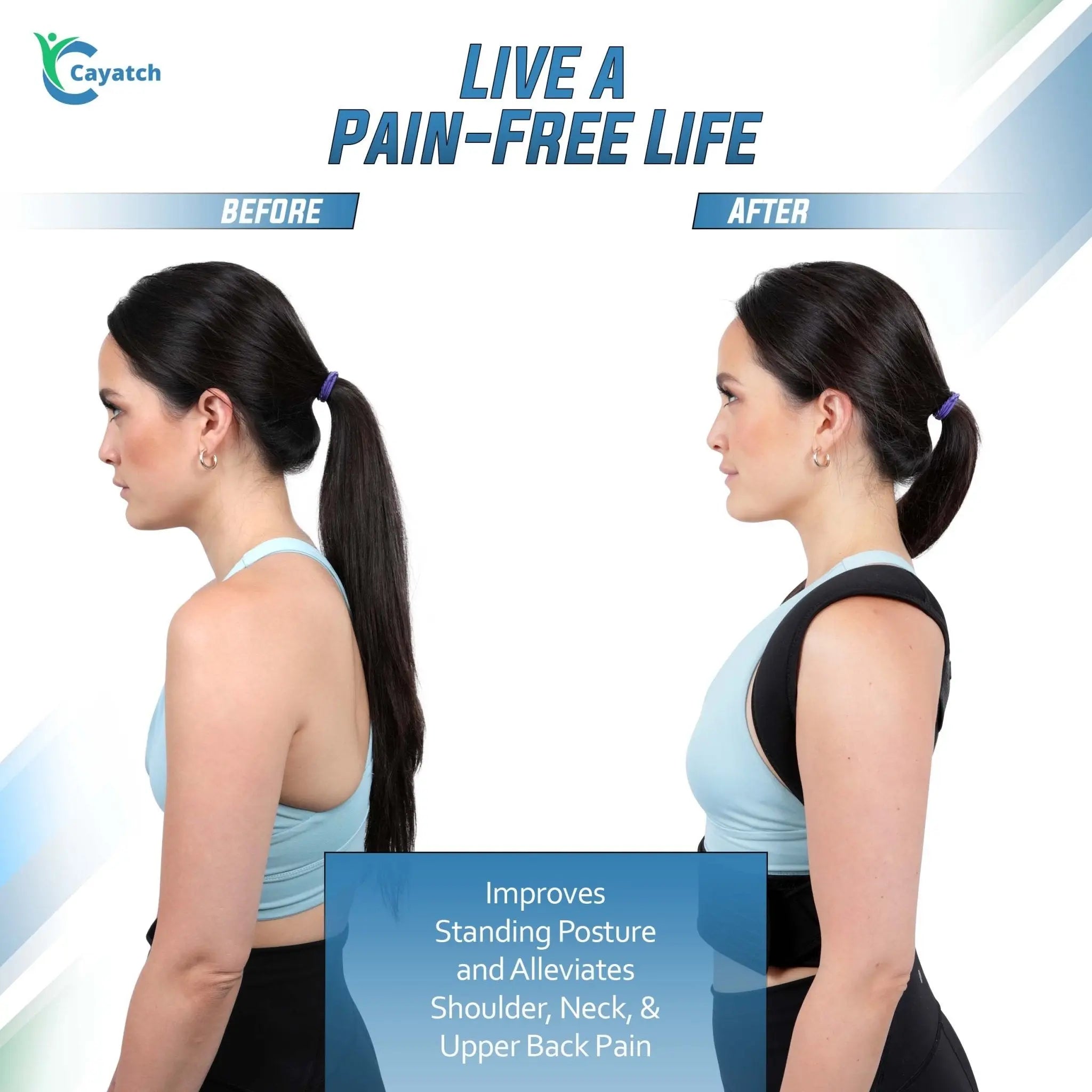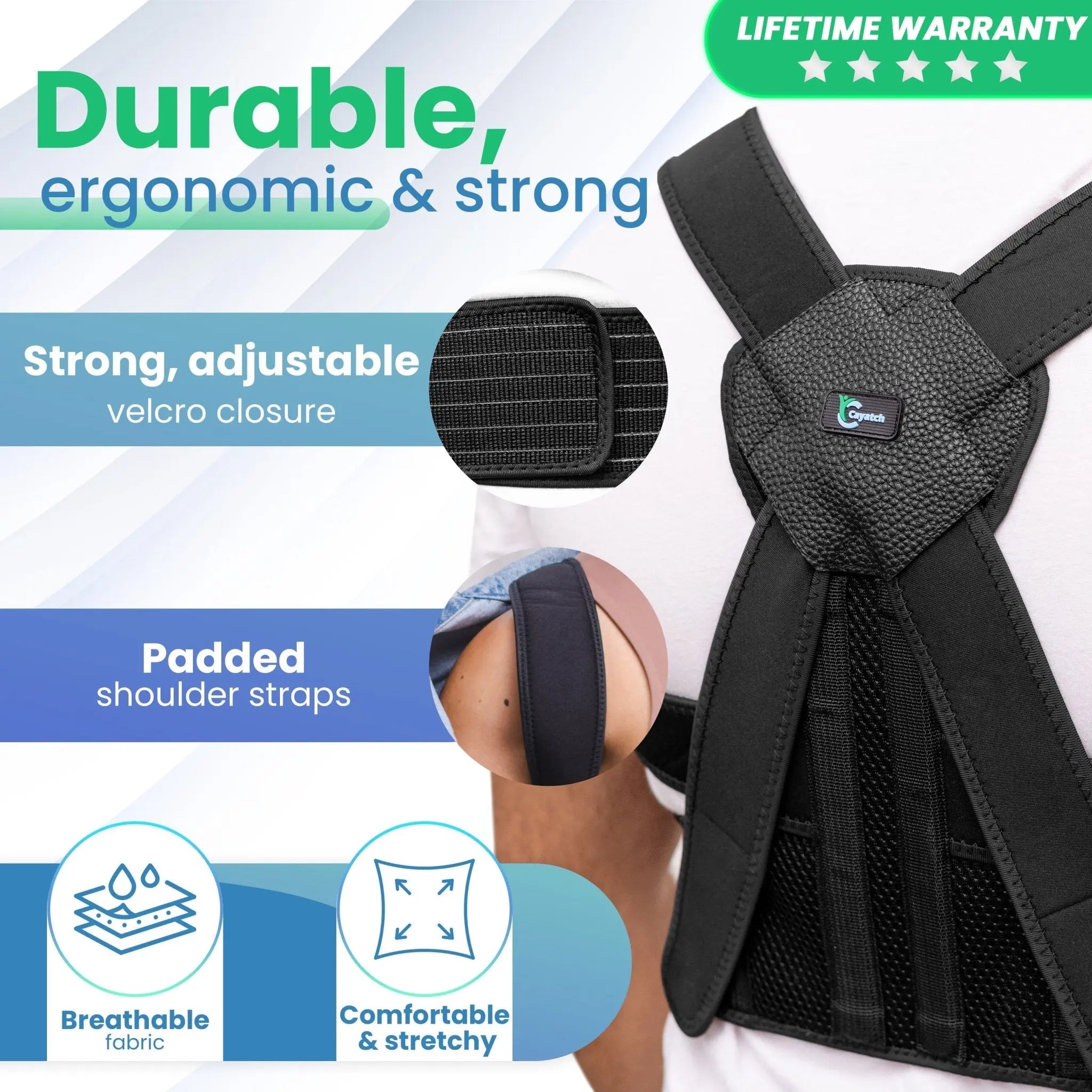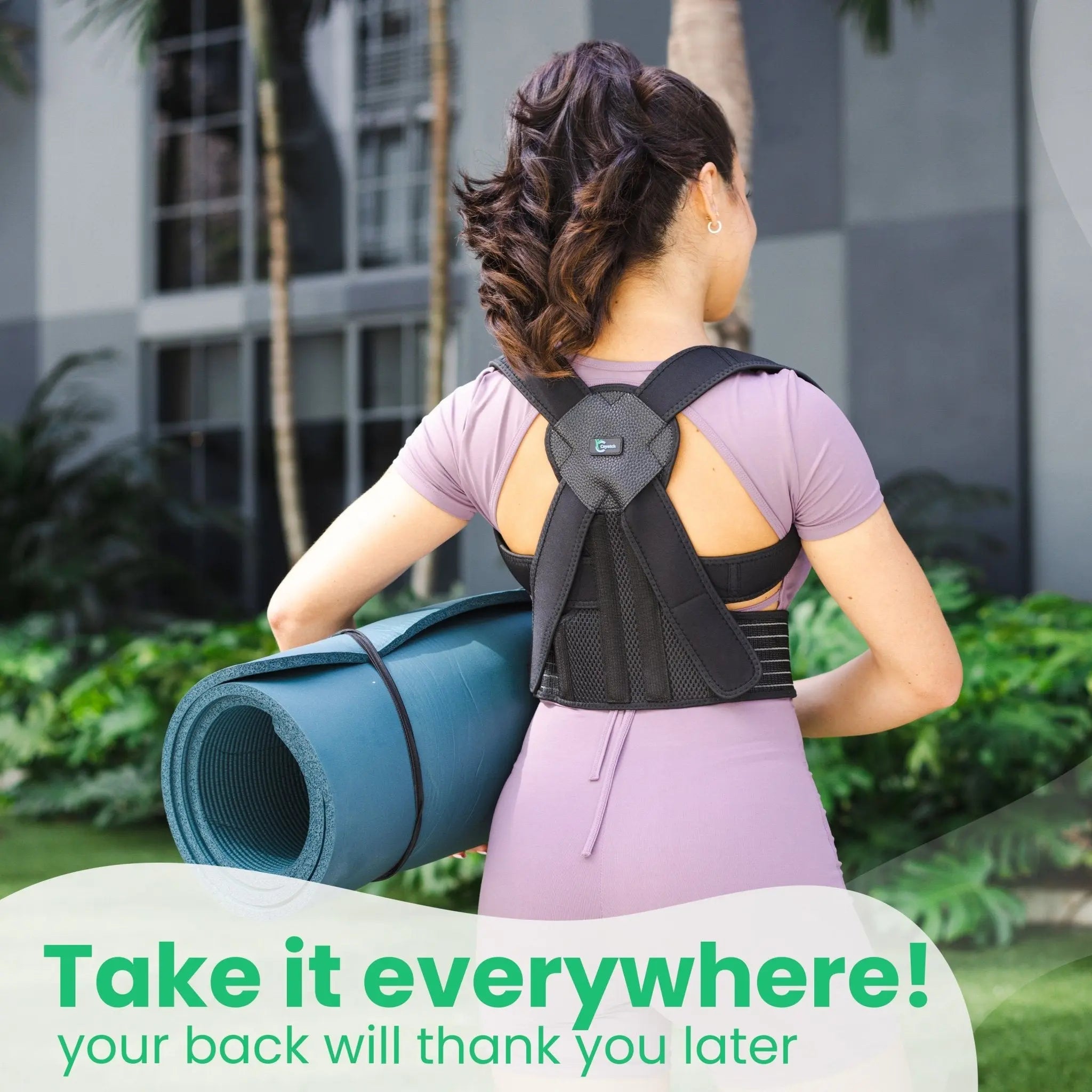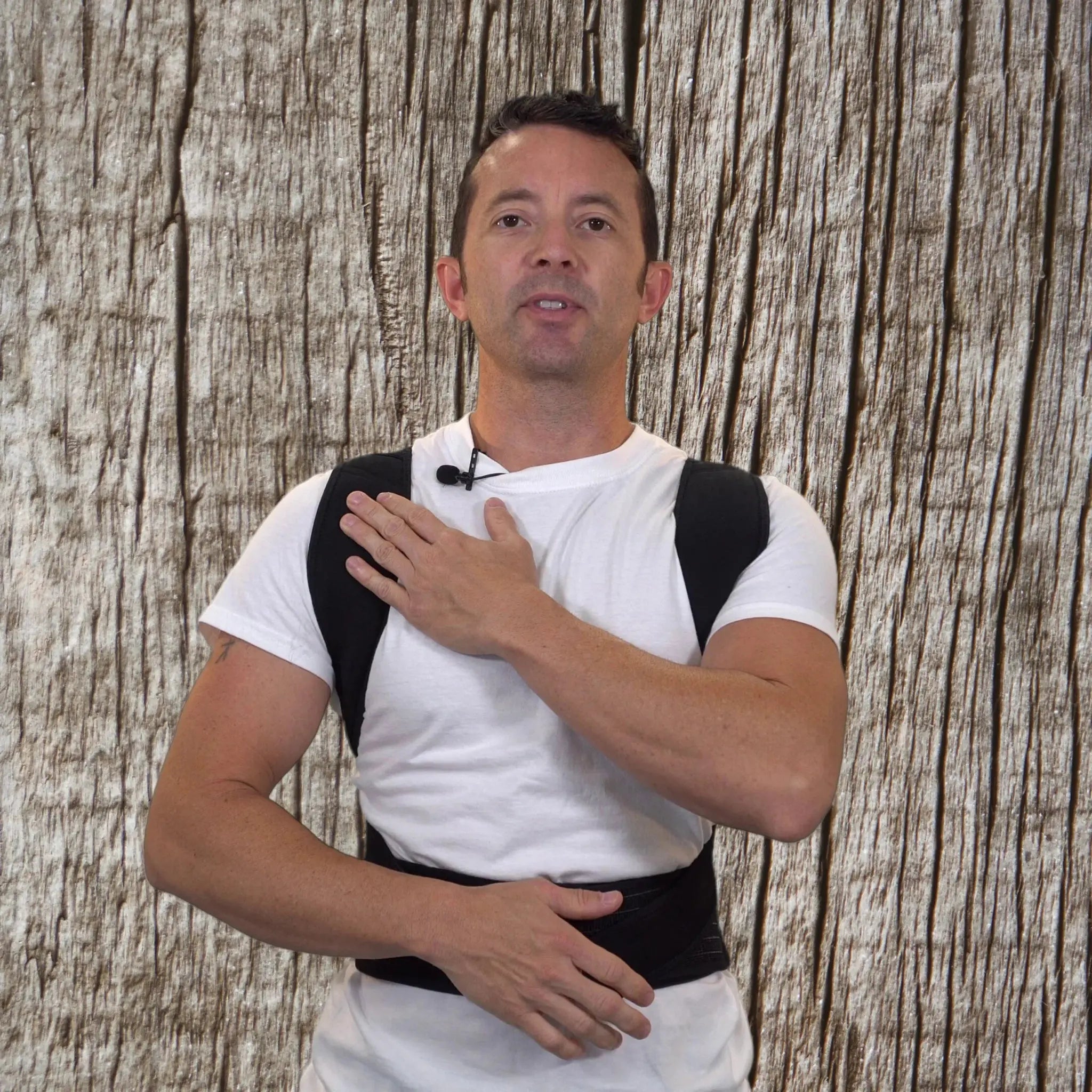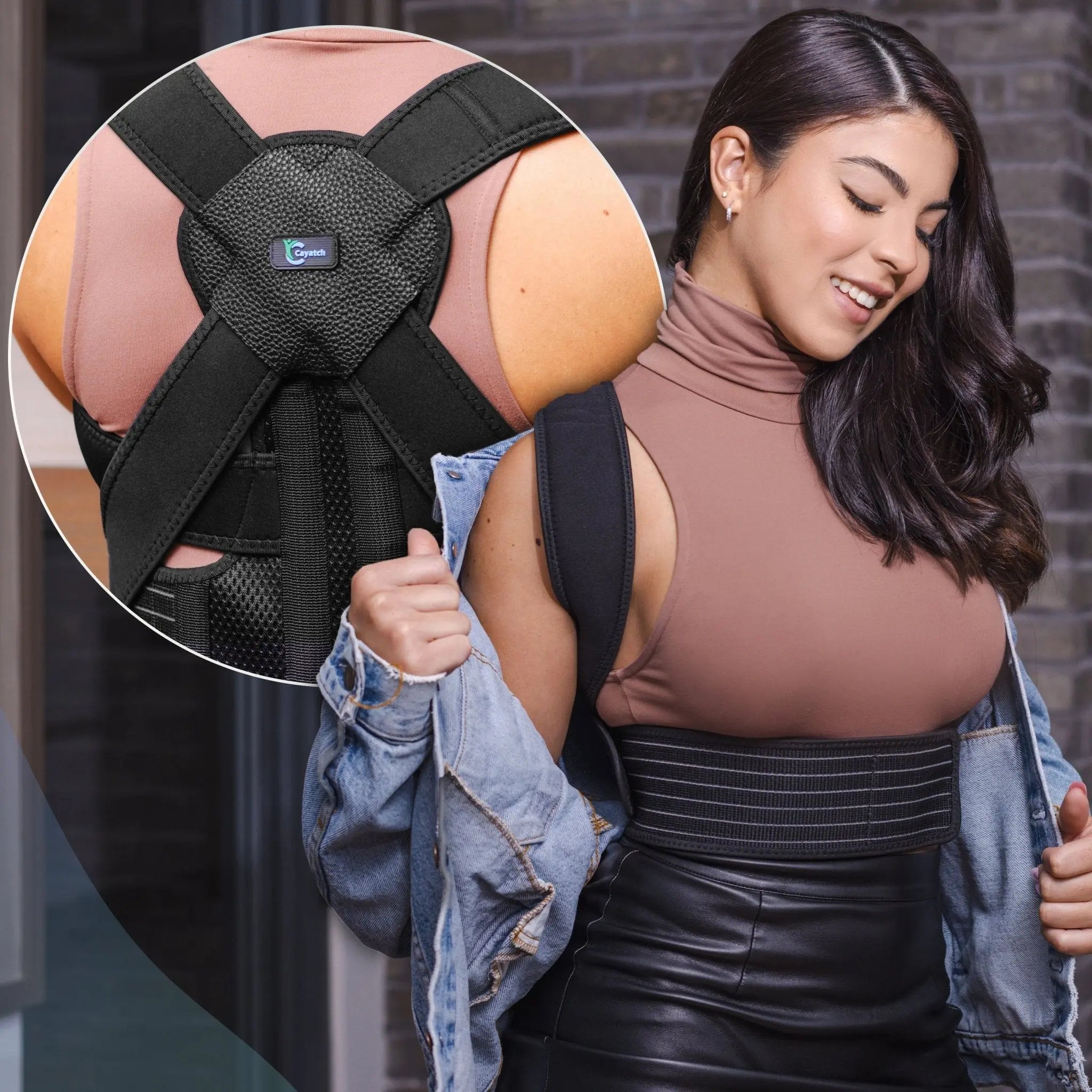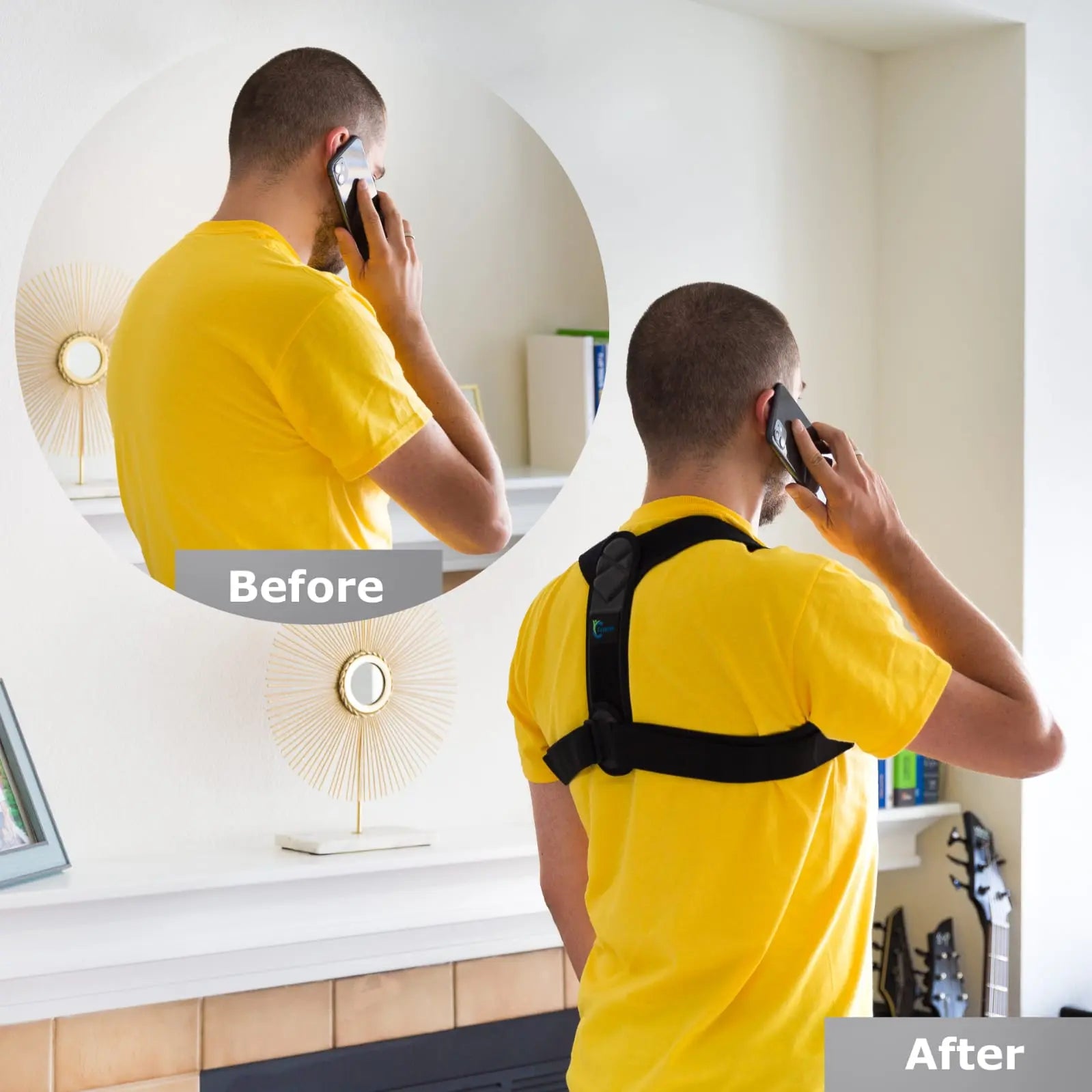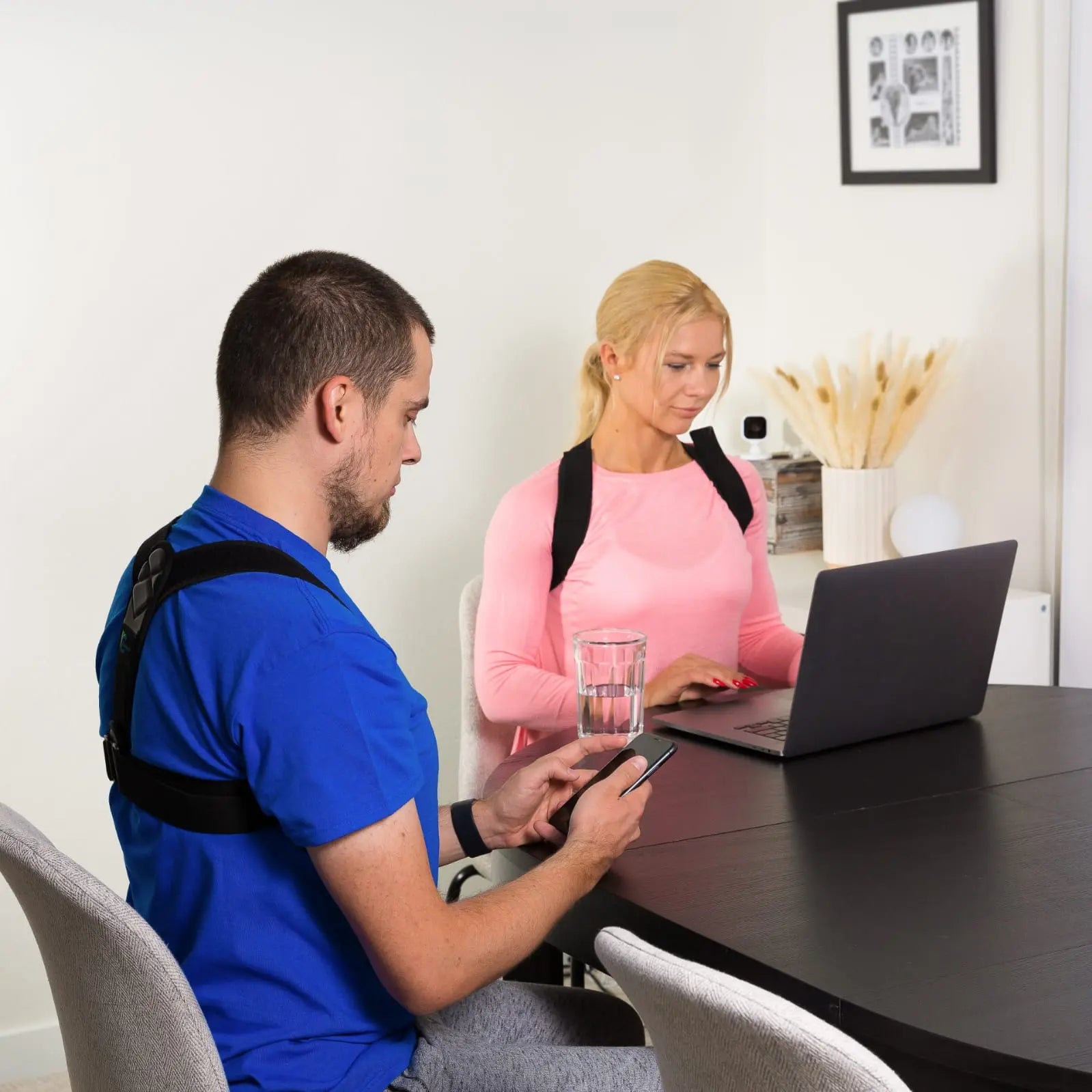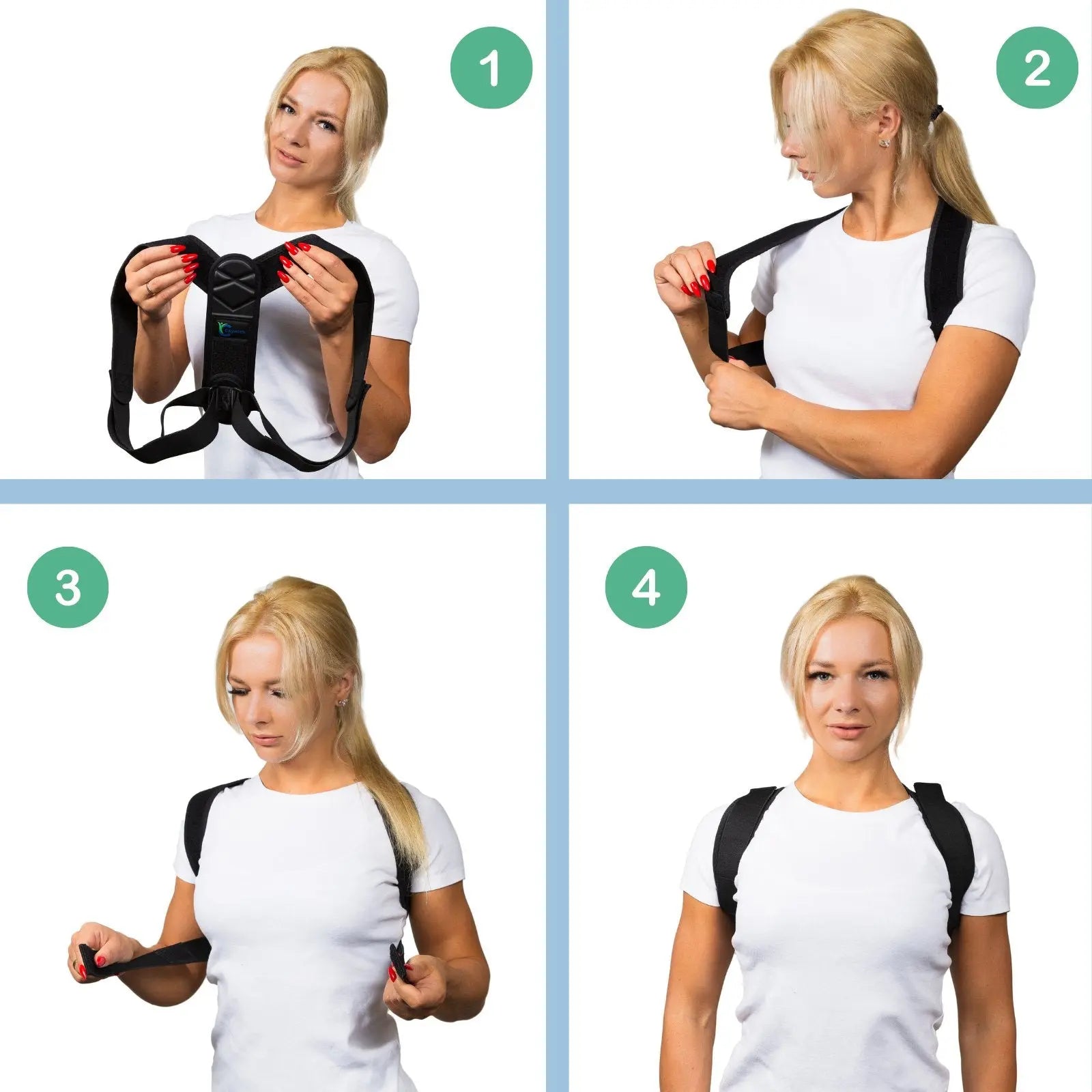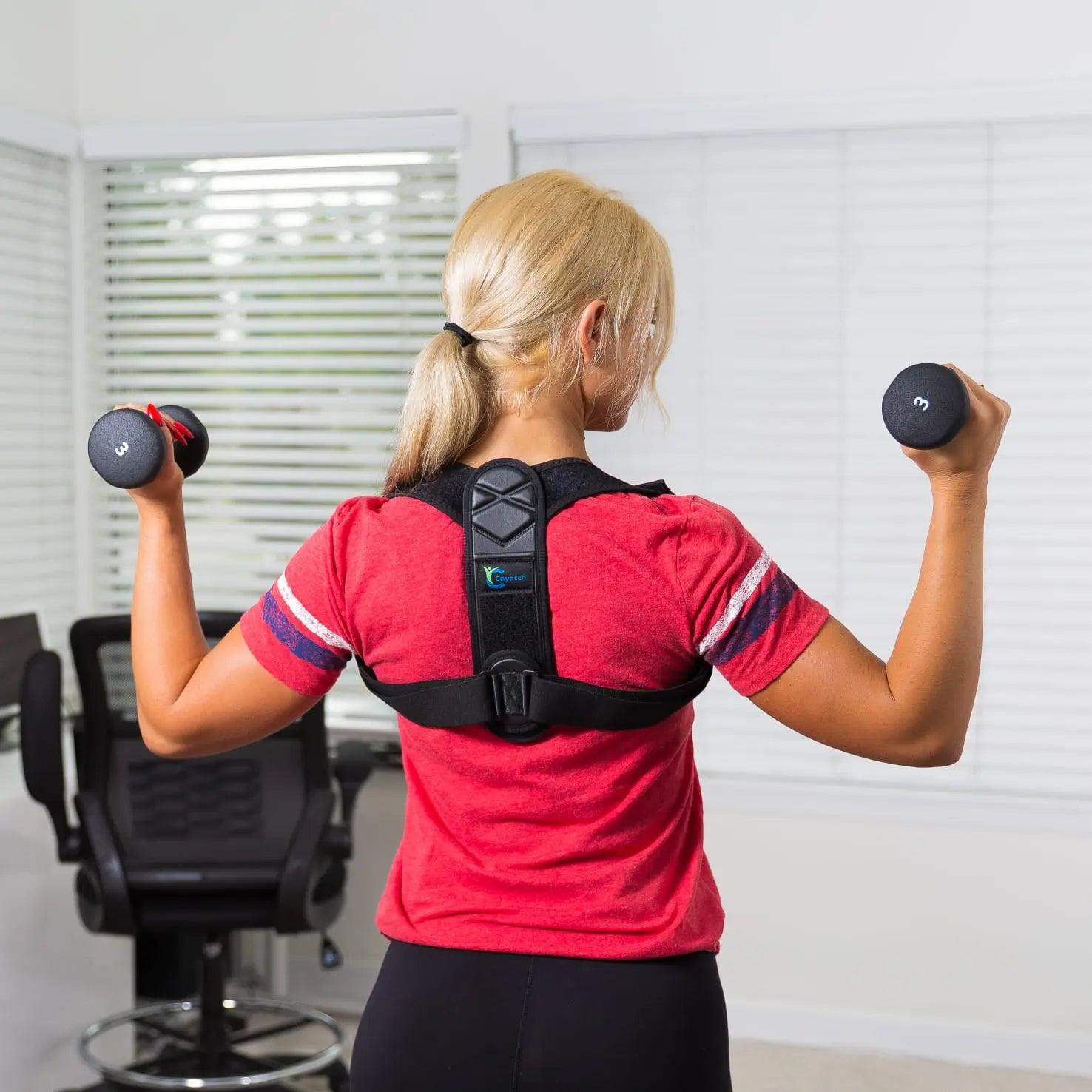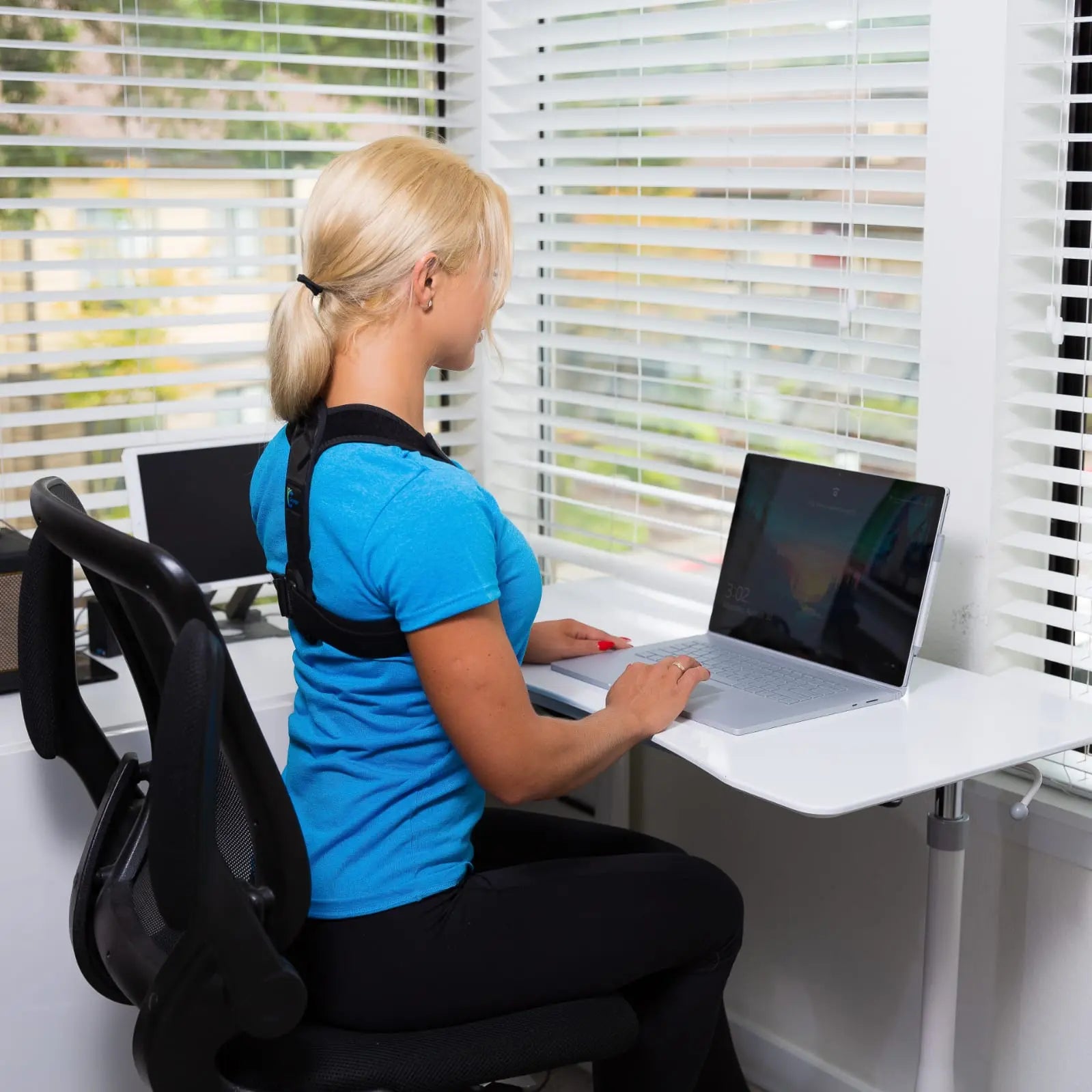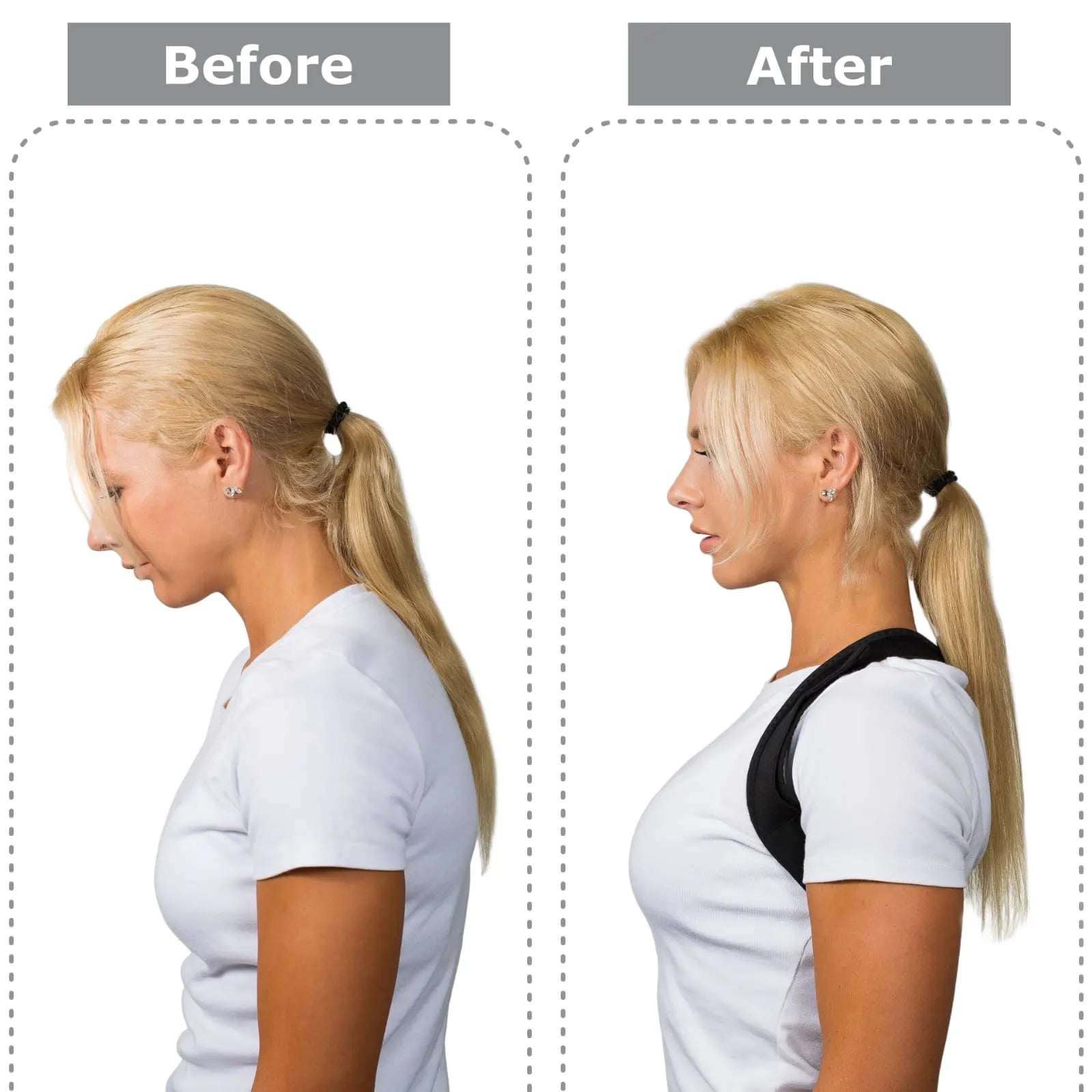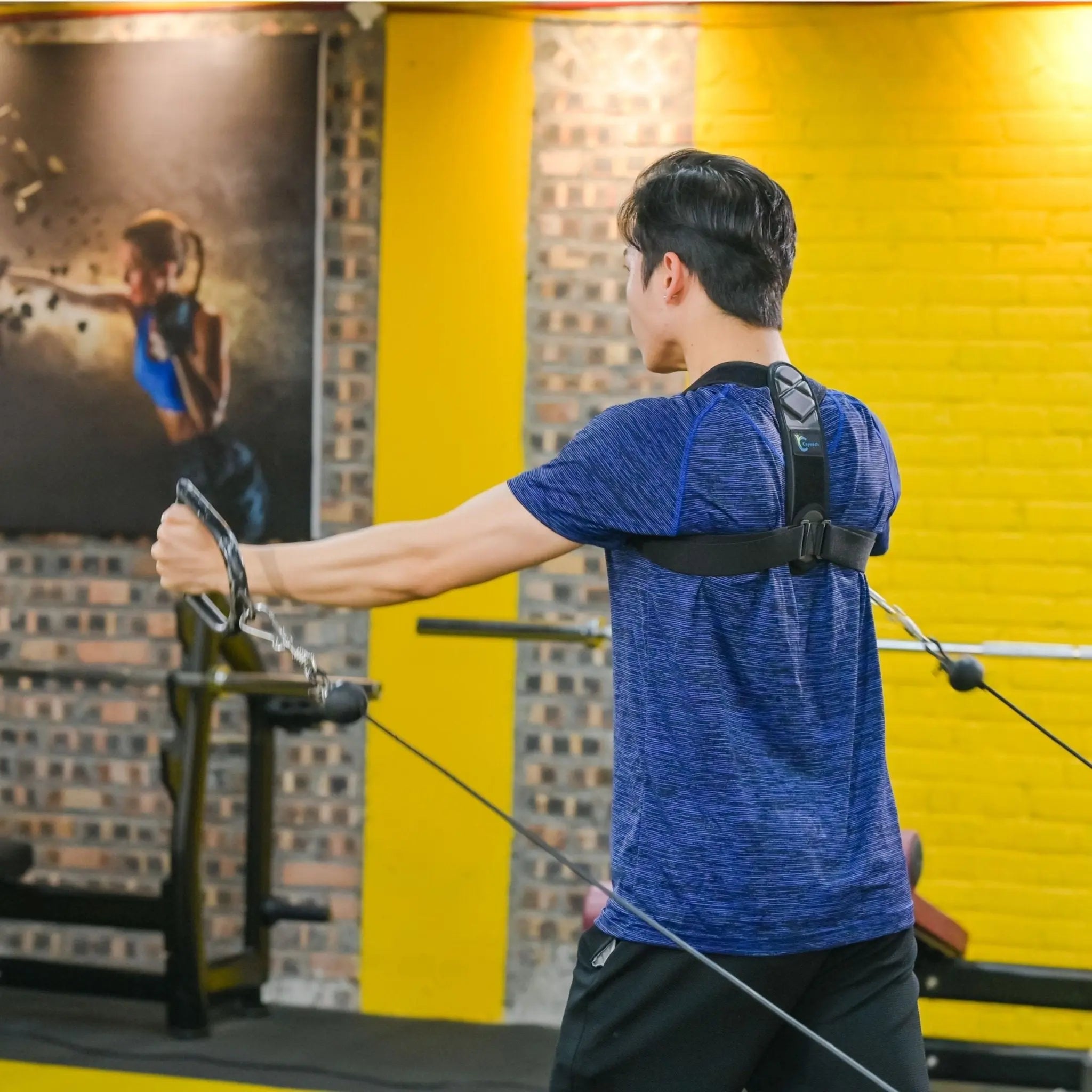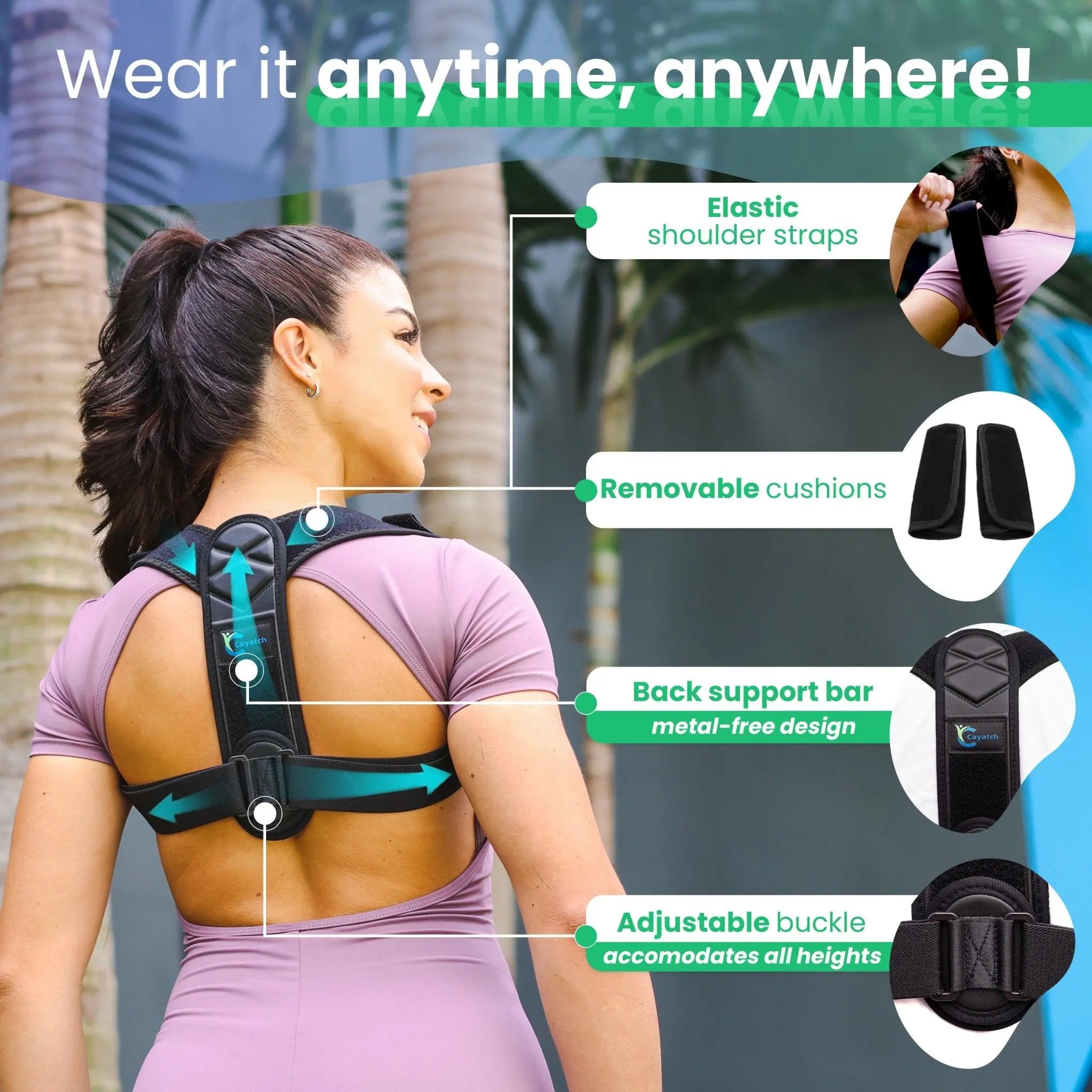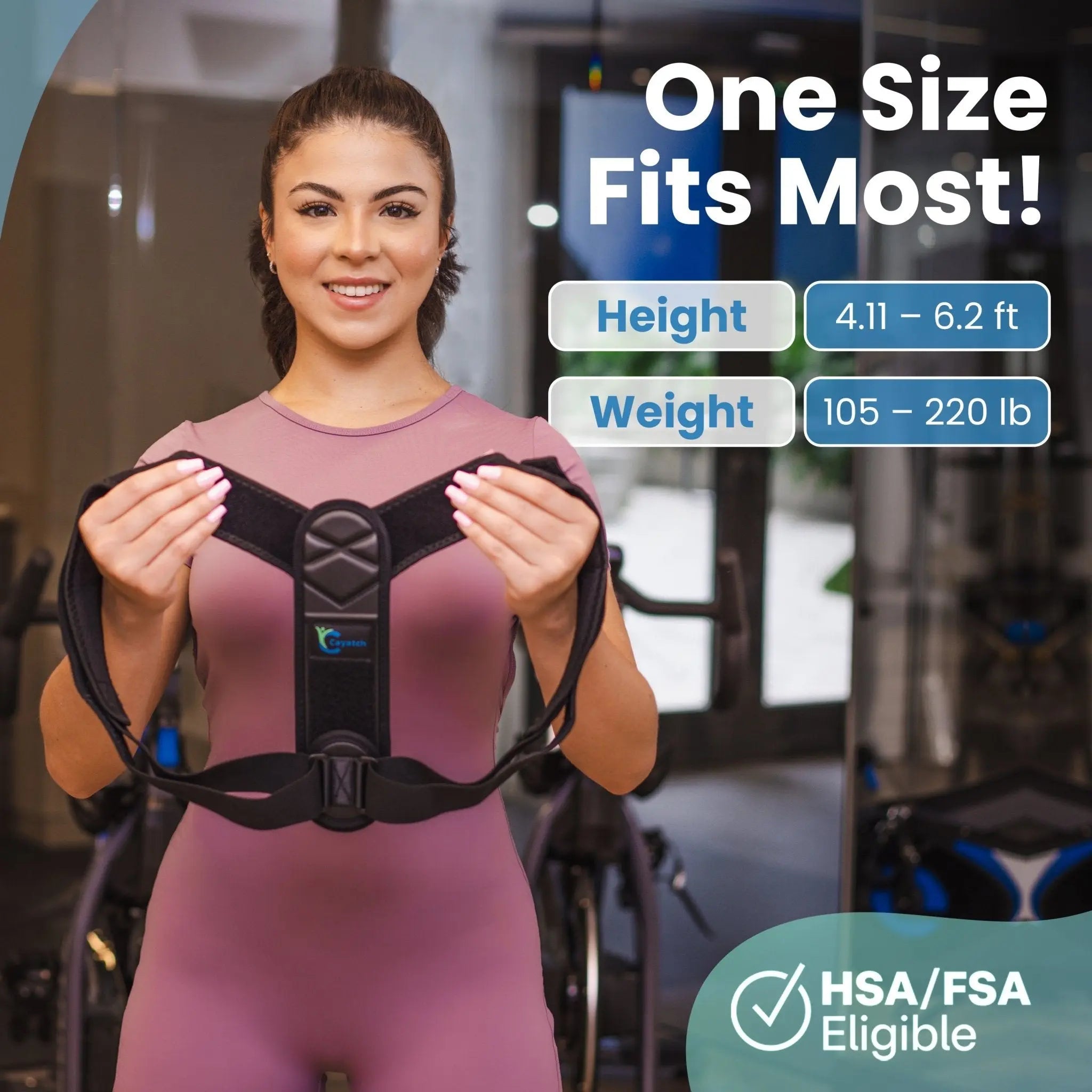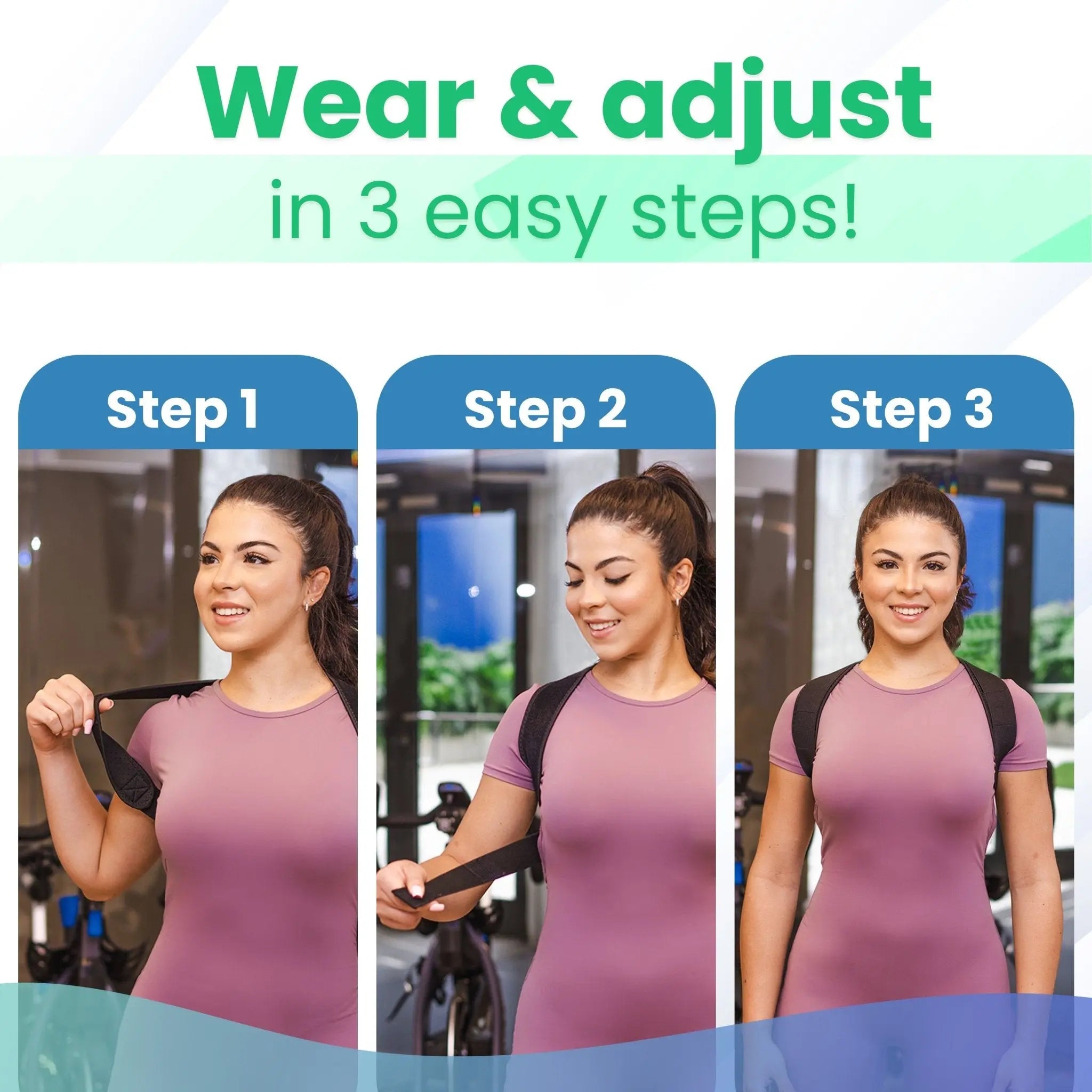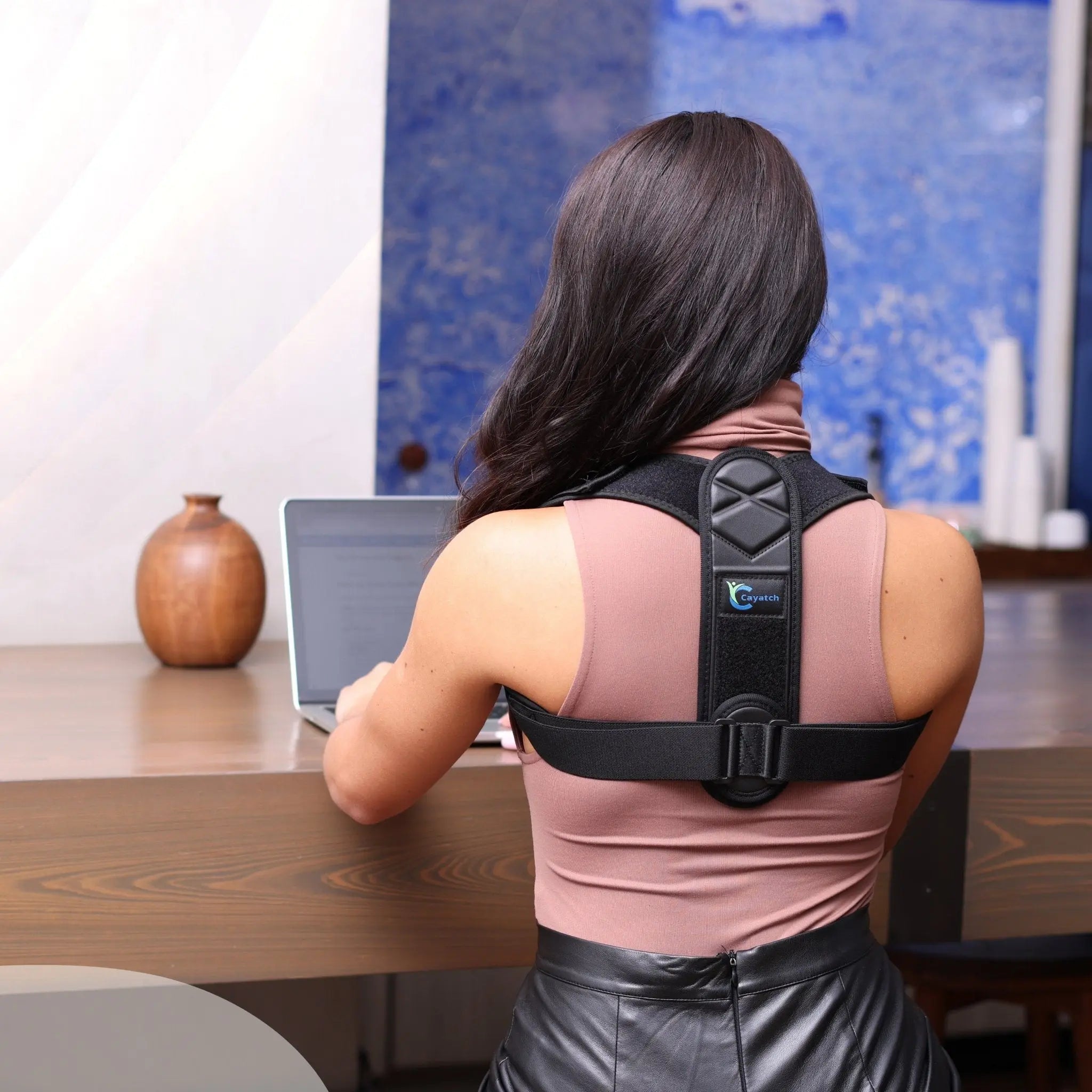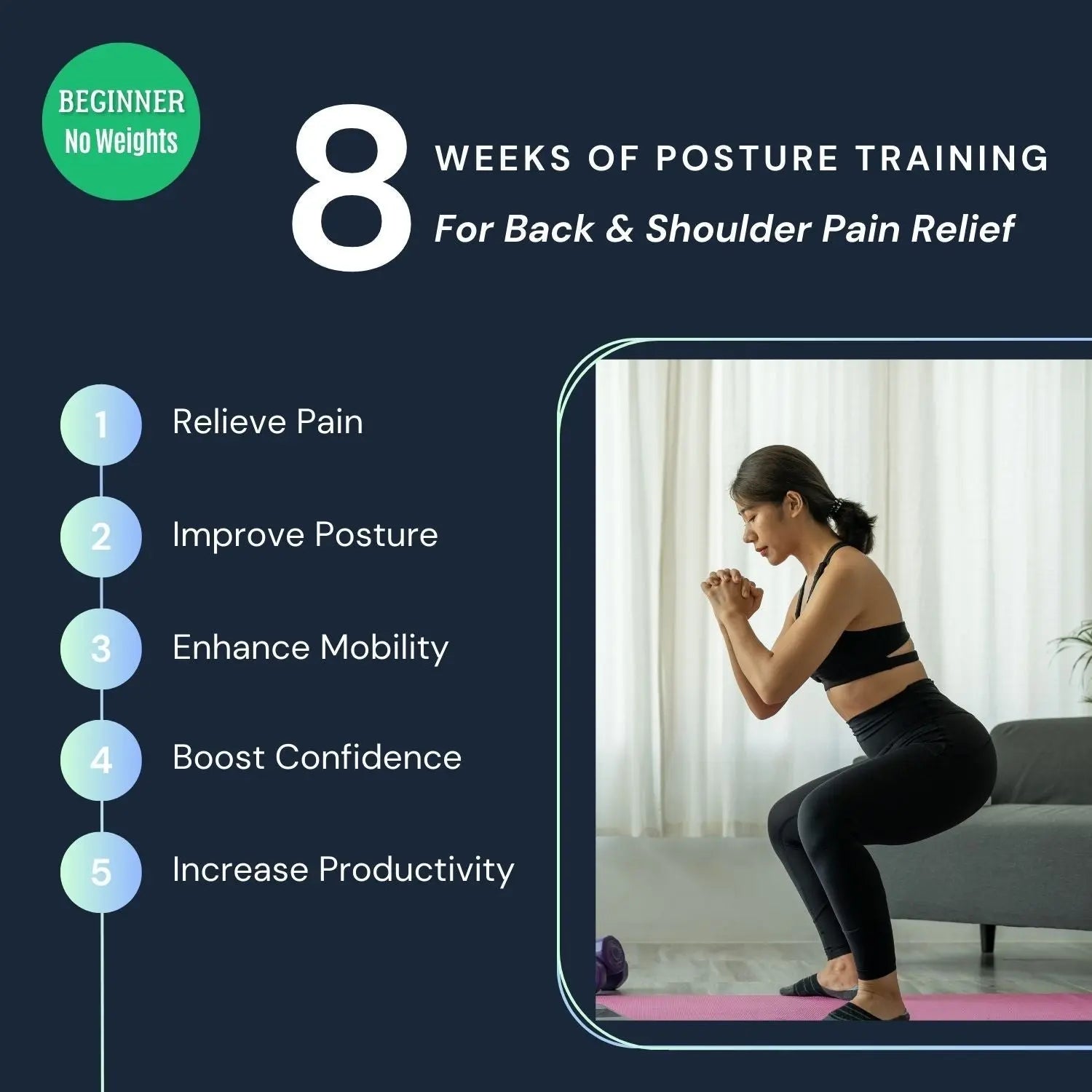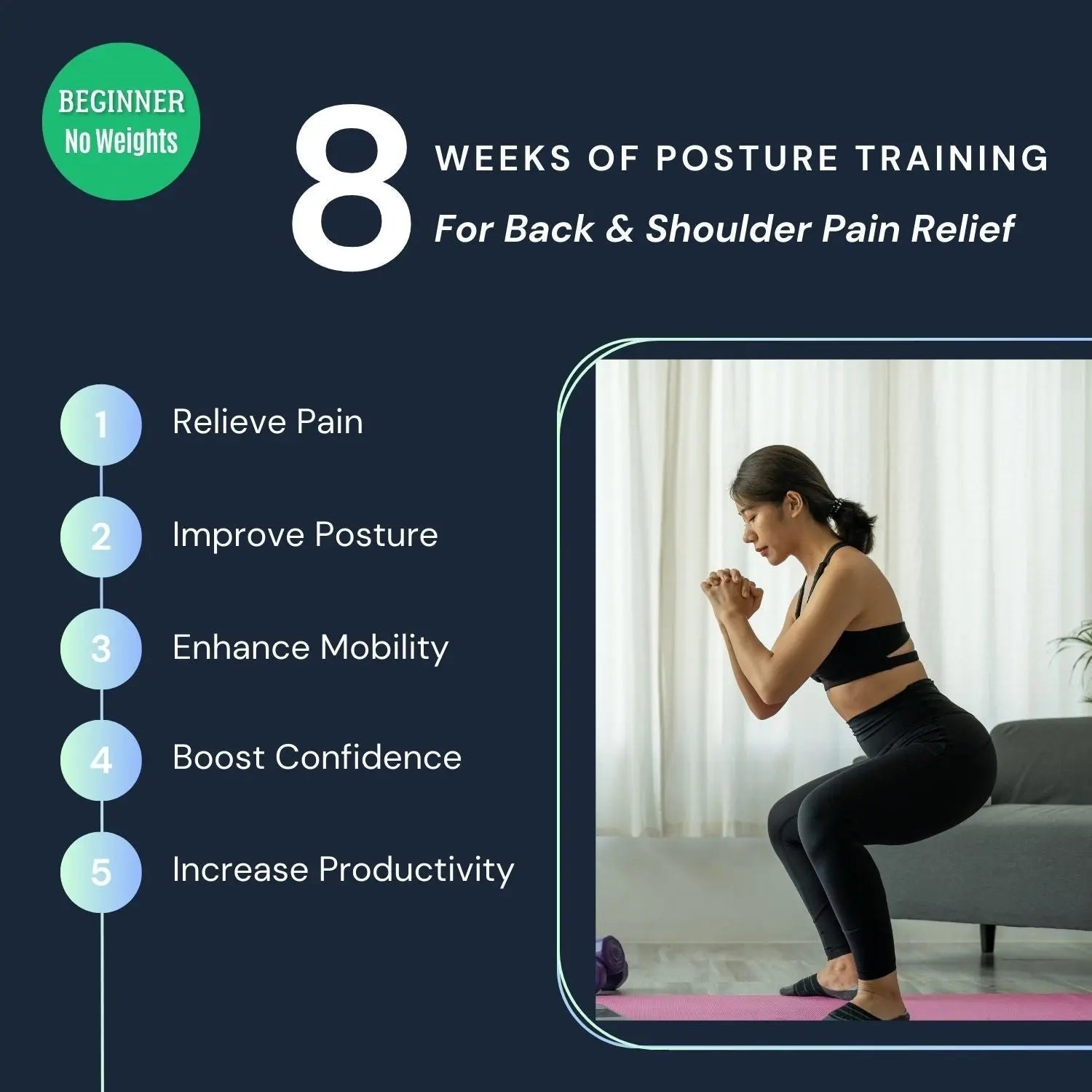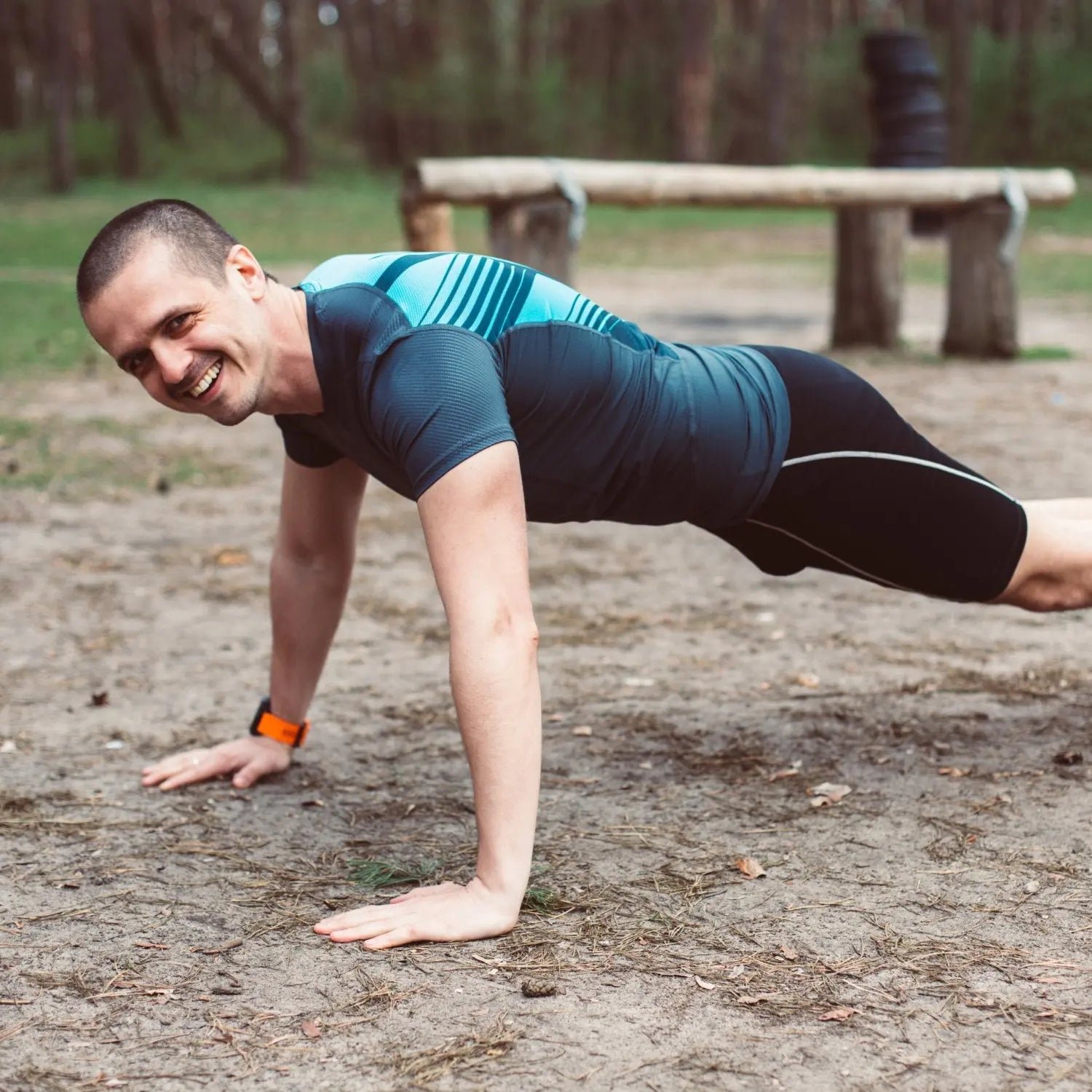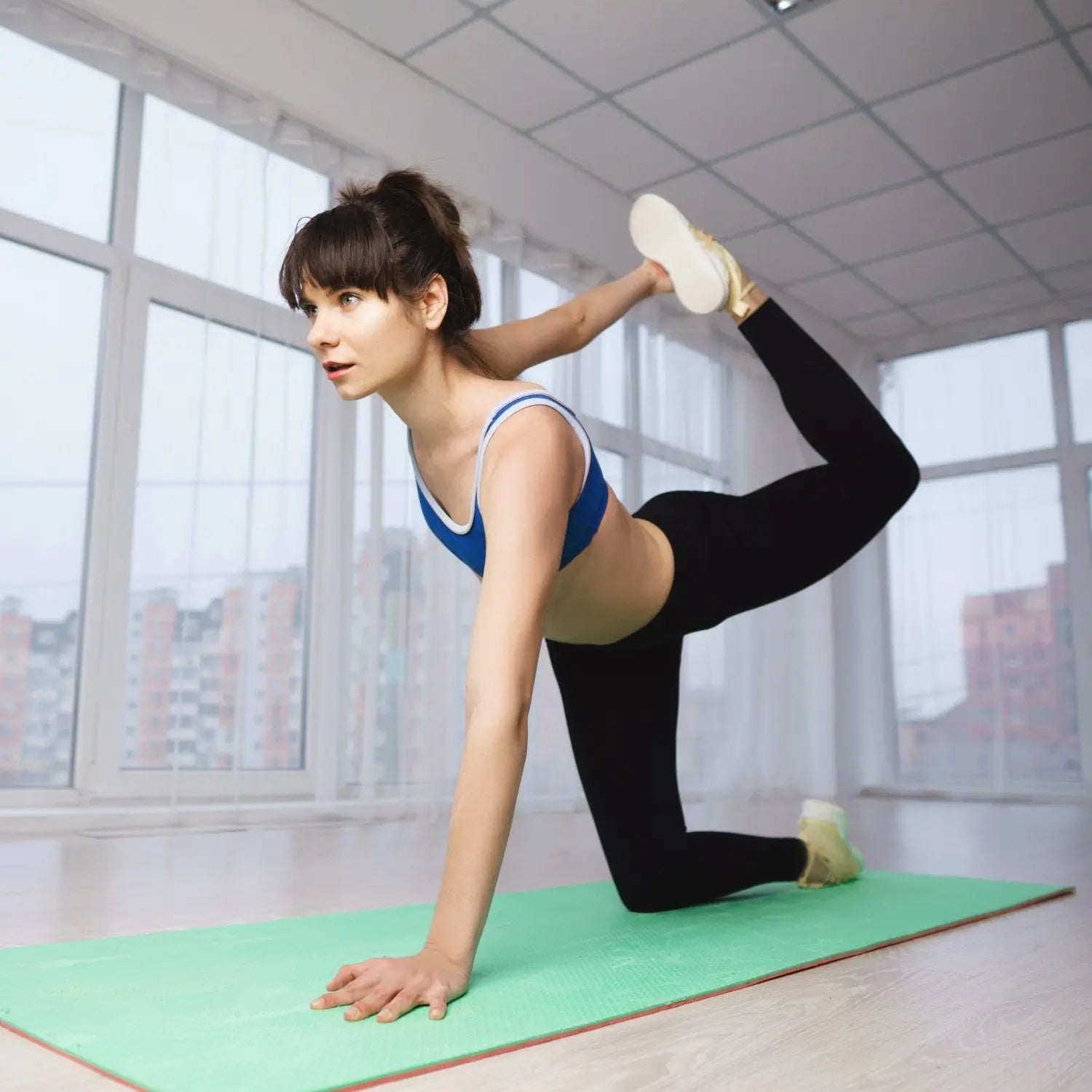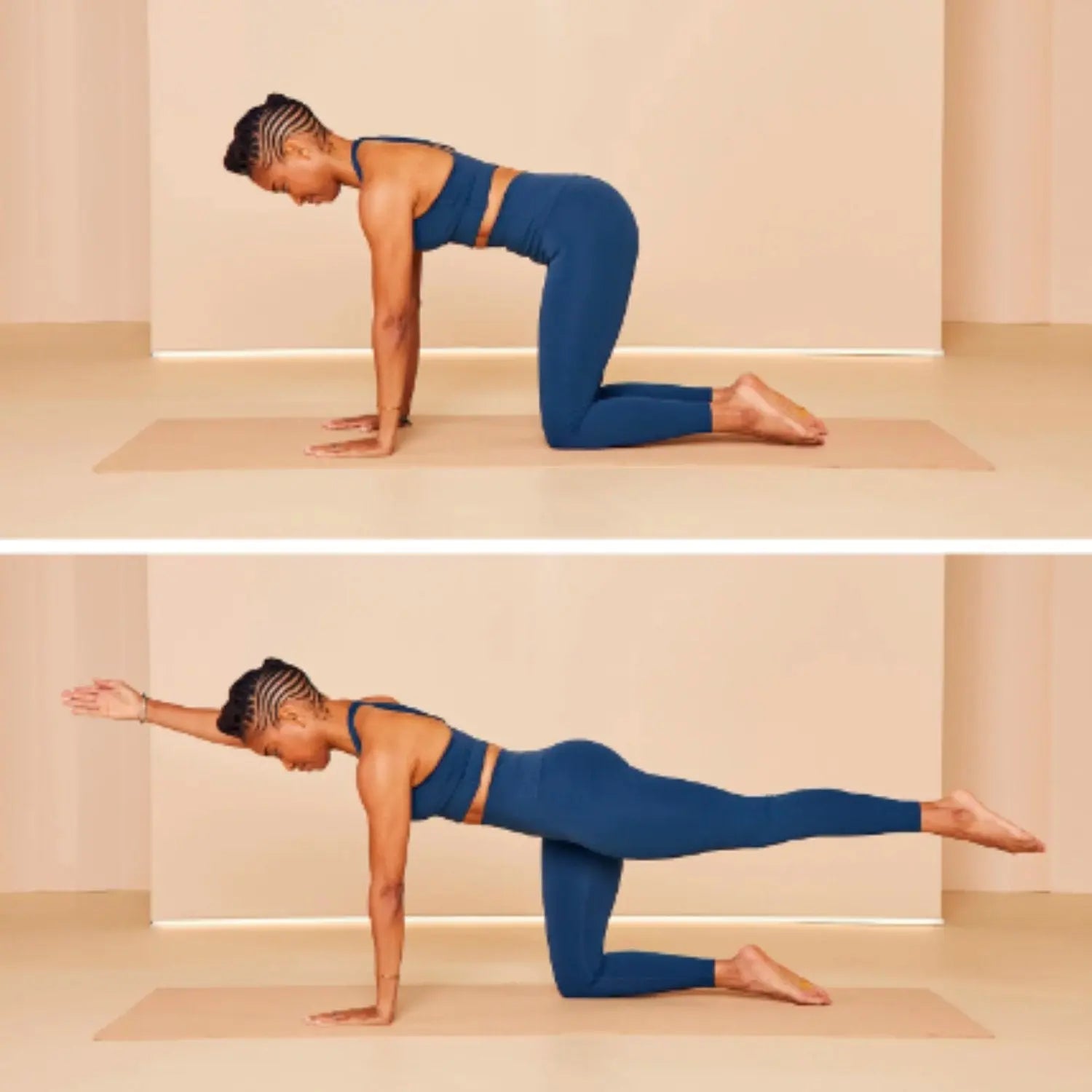Can Bad Posture Cause Chest Pain?

Have you ever experienced that uncomfortable sensation in your chest when you find yourself slouching? It's like your body is telling you to straighten up and take a deep breath.
Well, there's a reason for that feeling. When you slouch, you're putting pressure on your internal organs, including your lungs. This compression makes it harder for you to breathe comfortably, which can lead to chest pain.
So, can bad posture cause chest pain? Absolutely! But it doesn't stop there. It can also impact your breathing and cause issues with your muscles and bones.
We're going to dive into the world of bad posture and its effects on your health. We'll explore how it can lead to chest pain, breathing difficulties, and even musculoskeletal problems. Plus, we'll discuss some tips on how to fix your posture and start feeling better. So, grab a seat (but sit up straight!) and let's get started!
How Does Bad Posture Cause Chest Pain?

Some people may wonder how posture is related to chest pain. Let's address this question now.
Understand this clearly: When you maintain an upright position, your posture allows for the proper expansion of the chest cavity, facilitating optimal lung function.
Conversely, poor posture can compress the chest area, potentially leading to restricted breathing and discomfort.
Posture, the alignment of the body's various components, goes beyond a mere physical stance. Poor posture can affect your muscles, compress your organs, and even subject you to lifelong pain.
Let's explore how your posture can impact different areas and cause chest pain. However, first, you must grasp the anatomy underlying the relationship between poor posture and chest pain.
1. The Connection Between Poor Posture And Chest Pain
As mentioned above, your chest pain could be caused by poor posture. There are several reasons for this.
When your posture falters, the first impact is on your musculoskeletal health. This results in muscle and ligament strain as compensation for misalignment, leading to imbalances that can cause discomfort.
The main connection between poor posture and chest pain becomes apparent when considering the impact on respiratory mechanics and muscular imbalances. You will struggle to fully expand your chest, resulting in shallow breaths.
Moreover, you will also experience sensations of tightness and discomfort in the chest. Bad posture can act as a trigger for musculoskeletal pain, which can disrupt your daily routines.
2. Stress On Chest Muscles And Ligaments
Adapting to poor posture affects all your internal components. Simultaneously, muscles and ligaments strain to compensate for the misalignment, leading to imbalances.
Organs may also shift from their natural positions, affecting their efficiency. Let's explore how your posture impacts this!
Misaligned posture causes specific muscles to become overworked and others to weaken due to underuse. The tightening of chest muscles compresses your lungs, making it harder to breathe.
Furthermore, poor posture can cause ligaments to become overstretched or weakened, reducing their ability to provide effective joint support.
This can lead to joint instability and pain and may also influence your heart health, introducing you to heart-related issues.
Most importantly, improper alignment can compress organs and disrupt their functionality. In the case of respiratory organs, poor posture can hinder the expansion of the lungs. It also has effects on your diaphragm.
This leads to reduced efficiency while breathing, eventually taking a toll on your overall well-being. Now we will look into the affected muscles due to your poor posture:
Affected Chest Muscles And Ligaments By Poor Posture:
Poor posture affects multiple muscles and ligaments in the chest region. Here are some of the muscles and ligaments that are commonly affected:
- Pectoralis Major: This muscle aids in the movement of your arms and shoulders. When you have a rounded shoulder posture, the pectoralis major tightens, making it difficult to breathe properly.
- Pectoralis Minor: Situated beneath the pectoralis major, the pectoralis minor can become overactive and tight due to hunching or slouching. This can contribute to discomfort in the chest and upper back.
- Rhomboids: Rhomboid muscles, located between the shoulder blades, help stabilize the scapula. Poor posture misaligns these muscles, affecting the chest area. However, exercise and proper treatment can effectively address this issue.
- Sternoclavicular Ligaments: These ligaments connect the collarbone to the sternum. Poor posture can strain these ligaments, leading to discomfort in the front of the chest.
- Costal Cartilage: The cartilage that connects the ribs to the sternum can also be impacted by poor posture. Slouching or hunching can exert pressure on and strain these cartilages, causing discomfort.
- Intercostal Muscles And Ligaments: Essential for breathing, these muscles and ligaments between the ribs can be influenced by poor posture, potentially leading to altered respiratory functions.
3. Impact On Respiratory Function

The relationship between posture and lung capacity is a crucial yet often overlooked aspect of our respiratory health. If you don't understand this connection, we'll explain it now.
Even if it's not immediately apparent, your posture determines how your lungs expand during breathing. Poor posture can disrupt lung capacity and overall well-being.
Experts have found that proper posture offers the benefit of optimal lung function. When we maintain an upright stance, our chest opens up, creating enough space for our lungs to expand during inhalation.
This expansion enables the air sacs in our lungs to fill with oxygen-rich air, facilitating efficient oxygen exchange to fuel our energy needs.
In contrast, poor posture can restrict the chest's ability to fully expand, leading to shallow breathing. Have you ever felt unable to take in enough oxygen after a run?
It's somewhat akin to that sensation—your body craves more oxygen, but you struggle to inhale it.
This diminished lung capacity can result in breathlessness and potentially impact overall health. Good posture not only benefits the lungs but also supports the muscles involved in breathing.
The diaphragm, the primary muscle responsible for inhalation, functions best when it has sufficient room to move downward.
Another critical point to note is that effective oxygen exchange is essential for supplying oxygen to the body's tissues and removing carbon dioxide.
Poor posture that hampers lung expansion leads to less efficient oxygen and carbon dioxide exchange.
This can give rise to a range of issues, including fatigue, decreased energy levels, and even feelings of anxiety due to inadequate oxygen supply.
4. Rib And Spine Alignment
Good posture ensures a balanced relationship between the ribs and the spine. When posture is poor, the ribs can become misaligned. Let's delve into this in-depth!
Slouching or hunching forward can cause the ribs to angle downward, reducing the space available for them to expand during breathing.
This not only impacts respiratory mechanics but also strains the intercostal muscles.
Additionally, it causes your spine to misalign, potentially leading to severe issues like permanent spinal misalignment that may require surgical intervention.
The natural curvature of your spine is vital for maintaining stability and proper alignment. Poor posture disrupts this equilibrium.
For instance, slouching forward increases the curvature of the upper back (thoracic spine), while a forward head posture affects the cervical spine (neck).
Consequently, misaligned ribs and an altered spine can hinder proper respiratory function. As we mentioned earlier, your chest won't be able to fully expand, resulting in shallow breathing.
Persistently poor posture can exacerbate these disruptions over time. Chronic misalignment can lead to muscular imbalances, ligament strain, and even structural changes in the spine.
5. Nerve Compression And Referred Pain

Abrupt posture disrupts your nervous system and compresses your nerves. So, if you're wondering why your posture affects your nerves, we will dive deeper into it in this section.
Nerves passing through the thoracic region might experience compression due to poor posture. This can lead to referred pain, where discomfort in one area of the body is felt in another.
The transmission of impulses between various areas of the body and the brain is facilitated by the nerves. Poor posture can cause discomfort and distress by compressing or impinging these nerve structures.
Due to compression and strain in nerve pathways, the brain's interpretation of pain signals can contribute to discomfort in the chest area.
6. Muscle Imbalances And Tension
We may already understand that poor posture has a negative impact on our muscular health, leading to muscular imbalances.
It can cause certain muscles to become overactive while others weaken due to underutilization. Let's explore how this occurs!
The resulting asymmetry disrupts your body's natural function. When your posture causes your chest muscles to tighten, it potentially leads to chest discomfort as adjacent muscles and structures become strained.
Forward head posture (FHP) can contribute to a shoulder issue called subacromial impingement syndrome (SIS). Studies show that this type of posture affects your upper body in specific ways.
Your upper back might develop a more pronounced curve, and your shoulder blade can rotate downwards, tip forwards, and protrude more.
These changes exert pressure on the space beneath your shoulder bone, resulting in chest discomfort.
7. Heart And Blood Flow
Not only do your chest muscles feel the influence of your posture, but your blood circulation and heart health are also affected.
Consequently, if your slouched posture compresses blood vessels and disrupts blood flow, you may experience chest pain due to this abnormality. Now, let's delve into how this happens.
Poor posture hampers the heart's efficient pumping and the distribution of oxygen-rich blood.
According to certain experts, individuals leading a sedentary lifestyle, spending extended periods sitting down with poor posture, have a 147 percent increased likelihood of experiencing a heart attack or stroke.
8. Digestive Discomfort
Poor posture goes beyond impacting just our appearance – it can significantly affect our digestive system as well. If you're wondering how posture can influence your digestive health, here's a brief explanation.
Slouching can compress organs, impeding digestion and causing fullness, bloating, or discomfort after meals.
Maintaining a slouched posture while eating can affect the alignment of the digestive tract. This misalignment disrupts the natural flow of food and digestive juices, potentially leading to indigestion, acid reflux, or heartburn.
How To Fix Chest Pain From Bad Posture?

You can take several steps to alleviate chest pain caused by bad posture. The sooner you implement these measures, the more effective they will be over time. It's never too late to take action, so let's explore these strategies:
1. Exercise and Muscle Strengthening

Engage in exercises that target the chest, back, and core muscles. A robust musculoskeletal framework supports proper posture and reduces strain on the chest area.
Exercise and muscle strengthening play a significant role in improving your posture. Here's a concise overview:
- Chest Muscles: Strengthen the pectoral (chest) muscles, both major and minor, to support the muscles around the shoulders. This helps alleviate issues like rounded shoulders. Incorporate exercises like push-ups, chest presses, and flies to enhance these muscles and facilitate an upright chest position.
- Back Muscles: Regularly exercise the back muscles, particularly the upper back and the muscles between the shoulder blades. These muscles counteract a forward shoulder posture by pulling the shoulders back. Include exercises such as rows, lat pulldowns, and face pulls to build strength in these areas.
- Core Muscles: Strengthening the abdominal muscles can prevent back pain and enhance your ability to maintain an erect posture. A strong core also contributes to stability and proper posture. Exercises like planks, side planks, bridges, and others targeting deep abdominal muscles are effective for building core strength.
- Musculoskeletal Support: Good posture relies on a sturdy and flexible musculoskeletal structure. Building muscles that are both strong and supple allows you to stand and sit with a straight back, avoiding back strain and relieving pressure on the chest.
Improving your posture through exercise and muscle strengthening can greatly alleviate chest pain and enhance your overall well-being. Remember, consistent effort and proper technique are key to achieving positive results.
2. Stretching for Flexibility

Combining strength and flexibility exercises can rapidly enhance your posture. Regularly stretching the muscles in your chest, shoulders, and neck can alleviate tension and boost flexibility.
Supple muscles contribute to improved posture and reduced discomfort. Here's a succinct overview:
- Balanced Muscle Tone: Integrating strength training into your routine is vital for maintaining a healthy muscular tone. By engaging both agonist and antagonist muscle groups, you create a balanced level of tension that promotes proper posture and alignment.
- Muscle Endurance: Sustaining an upright posture throughout the day requires the ability to prevent muscle fatigue and resist the temptation to slouch.
- Supporting Muscles: Strengthening the muscles in the chest, shoulders, and neck provides enhanced support for the spine and upper body. This diminishes the likelihood of hunching forward, which can trigger tension and pain in the chest area.
- Improved Blood Circulation: Both strength and flexibility workouts contribute to better blood circulation. Enhanced circulation sends essential nutrients and oxygen to muscles, enhancing their health and aiding in post-workout recovery.
- Neuromuscular Connection: Engaging in strength and flexibility exercises enhances the communication between your brain and muscles. This connection empowers you to sustain good posture more effectively, both consciously and subconsciously.
By incorporating stretching, mobility, and flexibility exercises into your routine, you can swiftly enhance your posture, reduce discomfort, and promote overall physical well-being. Consistency in practice will yield the best results.
3. Ergonomic Adjustments For Daily Activities

To ensure optimal ergonomics, it's important to make necessary adjustments to your workstation and sitting positions. Proper support for good posture while sitting or standing is crucial. But how can you achieve this?
Ensure proper alignment when sitting, standing, and using devices like standing desks to prevent strain.
A well-aligned desk is essential to maintain a healthy posture during work hours. Align your body by adjusting the chair height, keyboard and display positions, and desk height.
Use a chair with adequate lumbar support and position the monitor at the correct height for efficient work.
Select an adjustable chair that allows you to sit with your back in a neutral posture. Keep both feet flat on the floor and bend your knees to a right angle.
You can maintain the curvature of your lower back with the help of a cushion or lumbar support.
Keep your computer screen at eye level to avoid straining your neck and back. This prevents neck stiffness and serves as a reminder to maintain a straight back.
Ensure that your arms are at a comfortable height and that your wrists remain in a neutral position while using the keyboard and mouse. Your wrists should not be subjected to awkward positions when using a computer.
Take regular breaks throughout the day to stand up, stretch, and walk around. Taking short breaks helps minimize stiffness and muscular stress caused by prolonged sitting.
Whether sitting or standing, maintain a neutral position for your spine. Avoid slumping or standing with an unnaturally rigid stance. Imagine a line running directly from your ears down to your hips, shoulders, and ankles.
4. Mindful Postural Awareness
Mindfulness involves being fully present in the moment, both internally and externally. But can it positively impact your posture? Absolutely!
Practice mindfulness to stay aware of your posture throughout the day. Engaging in activities like yoga and stretches can contribute to improved posture.
Being mindful of your posture can lead to significant changes that alleviate any discomfort.
Conscious posture awareness helps counter the negative effects of habitual slouching and poor alignment. Maintain good posture by regularly paying attention to your body and making intentional adjustments.
Yoga is a holistic discipline that addresses the mind, body, and spirit. Enhance your posture through yoga by strengthening your core, chest, and back muscles.
Warrior, Cobra, and Upward Dog postures are particularly effective for expanding the chest and extending the spine.
Regular stretching can alleviate tense muscles that contribute to slouching. Counteract the adverse effects of sitting and slouching by stretching the chest, shoulders, neck, and hip flexors.
Mindfulness activities like yoga aim to strengthen the connection between the mind and body. This empowers you to make necessary posture modifications to reduce stress and misalignment.
Mindfulness inspires purpose, which translates into better posture in everyday activities like sitting, standing, and walking.
5. Effective Use Of Posture Correctors

We frequently advise individuals to begin using posture correctors, and there are definite benefits to doing so. Here are a few key points to consider if you're new to this concept.
When using posture correctors, such as posture-correcting braces, it's advisable to seek professional guidance. This approach can help you develop awareness of your posture, which in turn will assist you in maintaining good posture throughout the day.
Posture correctors designed for addressing poor posture are intended to guide you toward better alignment. As you work on enhancing your posture, these devices can offer encouragement and suggestions.
Corrective posture aids gently prompt the body into its optimal position. By wearing a posture corrector, you'll gradually become more mindful of your standing and sitting habits.
Initiate the use of a posture corrector for shorter periods and gradually increase the duration. This prevents dependence on the corrector and allows your muscles to adapt to its support.
6. Massage Therapy
Proficient massage therapists specialize in alleviating muscle tension in specific problem areas. Many people are unaware of the connection between posture and massage therapy. Here's an overview for your benefit.
Explore massage therapy and physical therapy to address muscular tension and imbalances that may contribute to chest pain. Skilled massage can provide relief and promote relaxation.
Massage techniques like deep tissue massage, myofascial release, and trigger point treatment can help alleviate tension in the muscles of the chest, shoulders, and neck.
Massage therapy has been shown to enhance blood flow, which carries oxygen and nutrients to active muscles.
Improved blood circulation can reduce muscular tightness and tension, both of which can be linked to chest discomfort.
Massage therapy triggers the body's natural relaxation response, which counters stress and tension. Given that stress contributes to muscle tightness and poor posture, a massage can potentially relieve chest discomfort.
Certain massage methods can enhance flexibility and range of motion in muscles and joints. This expanded range of motion can lead to improved posture and reduced stress on the chest.
7. Incorporating Posture-focused Apps

Smartphone apps serve as valuable tools for cultivating postural awareness. These apps are designed to promote better posture habits by offering features like reminders, exercises, and real-time feedback. But how do they work?
Posture apps can send you notifications and alerts throughout the day, prompting you to assess and adjust your posture. Treat these alerts as gentle cues to focus on your alignment.
Certain applications utilize your smartphone's sensors or camera to provide immediate posture feedback. They act as timely reminders to correct your posture if you start slouching or deviating from an upright position.
Many apps combine visual and audible cues to guide you into the correct posture. These cues demonstrate where and how to concentrate for achieving optimal alignment.
8. Seeking Professional Guidance

When dealing with posture-related concerns, consulting healthcare professionals is essential. These experts possess the knowledge and experience to conduct thorough assessments and create customized posture correction plans.
Physical therapists, chiropractors, and orthopedic specialists are all equipped to provide accurate posture evaluations, identify abnormalities, and explore potential underlying causes.
Given that each individual's postural challenges differ, medical practitioners can design tailored programs based on comprehensive information about you, including medical history, lifestyle, and any existing conditions.
9. Comprehensive Approach To Well-being
Addressing both physical and mental aspects creates an environment conducive to lasting pain relief. The question is, how can this be achieved? Let's delve into it!
Embrace a holistic approach that incorporates stress-reduction techniques such as yoga, meditation, and deep breathing.
The connection between the mind and body is profound. By focusing on both, you can alleviate pain and achieve long-term posture improvement.
Muscle tension, slouching, and general discomfort often stem from stress. Engaging in activities like yoga, meditation, and deep breathing reduces stress, thereby enhancing posture through muscular relaxation.
Yoga, with its blend of movement, breathing exercises, and meditation, promotes overall well-being.
Improved posture and reduced discomfort are among the many benefits that arise from heightened body awareness, enhanced alignment, and increased relaxation.
Mindfulness meditation hones your awareness of the present moment. As you become more attuned to how you hold yourself while seated, standing, and moving, your posture naturally improves.
10. Tracking Progress And Staying Accountable
Consistently monitoring your progress is crucial for maintaining focus on posture improvement. Tracking advancements in posture and pain reduction provides tangible motivation.
Observing your development highlights the extent of your progress. Improved posture and diminished pain should serve as strong incentives to uphold your newfound healthy habits.
Setting and working toward specific goals can enhance your posture and boost confidence. Regularly keeping track allows you to celebrate small victories along the journey.
11. Long-term Posture Maintenance

Sustaining good posture demands ongoing attention and dedication. Understanding the significance of sustained alignment is key.
Regular consultations with healthcare professionals can help prevent setbacks and ensure ongoing posture progress.
Enhanced posture delivers enduring benefits for musculoskeletal health, pain management, and overall quality of life.
With consistent practice, correct posture becomes a habitual part of your muscle memory, requiring less conscious effort.
Without vigilant progress monitoring, it's easy to revert to poor habits and posture. Routine maintenance and monitoring are vital to prevent regression and preserve progress.
When To Seek Medical Attention?
While your initial perception of your posture issue might not seem dire, there are instances when seeking professional help becomes essential.
Recognizing when intervention is necessary is crucial. Let's delve into when a more serious approach is warranted.
Severe or persistent chest pain, particularly when accompanied by symptoms like shortness of breath, dizziness, or sweating, could indicate a potentially serious condition like a heart problem.
Furthermore, if your chest pain radiates to your arms, jaw, neck, or back, it might signal heart-related concerns.
Immediate medical evaluation is necessary in such cases. Timely measures are crucial, as pain can escalate if not addressed promptly.
Frequently Asked Questions (FAQs)
How can you determine if chest pain is caused by poor posture?
If your chest pain occurs or worsens when you're in specific positions, such as slouching or hunching, it may be attributed to poor posture.
Finding relief through posture adjustments provides a hint that improper alignment might be contributing to the discomfort.
Is it possible for bad posture to lead to lasting chest area damage?
Yes, prolonged poor posture can result in lasting damage to the chest area. Ignoring the condition may lead to significant muscular imbalances and potential heart issues if not addressed in a timely manner.
Can improving posture alone help alleviate chest pain?
Improving your posture can indeed contribute to alleviating chest pain. Proper alignment facilitates optimal chest expansion during breathing, reduces strain on muscles and ligaments, and fosters overall musculoskeletal health.
Do mindfulness and relaxation techniques aid in chest pain reduction?
Certainly, mindfulness and relaxation techniques can assist in reducing chest pain. Stress and tension can intensify discomfort, and these practices effectively manage stress levels.
This, in turn, promotes relaxation in the chest muscles, potentially leading to pain relief.
Wrapping Up
Now that you've gained insight into a potential link between poor posture and chest pain, you can come to appreciate the vital importance of actively addressing your posture.
This connection highlights how posture isn't merely a matter of appearance; it's intricately tied to fundamental aspects of your overall health, particularly concerning your respiratory and cardiovascular well-being.
By maintaining good posture, you're not only promoting a confident physical presence but also facilitating the optimal functioning of your body's vital systems.
However, it's essential to recognize that resolving posture-related issues isn't always a solo endeavor. If you notice your chest pain or discomfort persisting or worsening over time, seeking medical attention is a prudent step.






















